PRO ARB
PROFESSIONAL TREE CARE FOR TREE SURGEONS














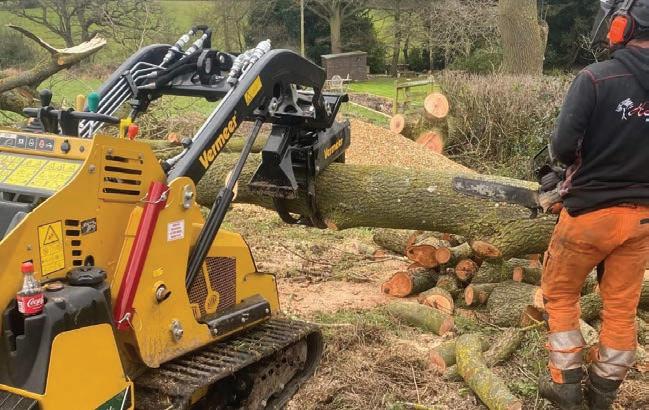


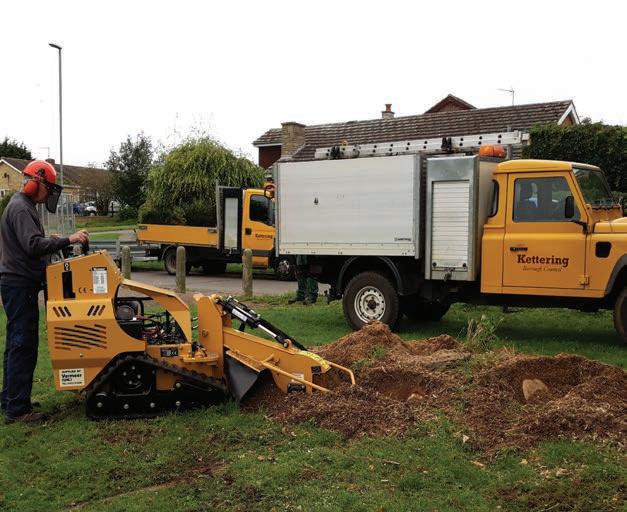
We have a great range of Vermeer Tree Care Equipment to suit UK Arborists. The new BC200 8" chipper packs a punch with it’s 57hp Kubota petrol engine. The ever popular Vermeer S925TX Skid Steer is now available with either the Kubota 25hp diesel or 40hp petrol engine. The Stump Grinder range includes the tracked SC30TX with great maneuverability and power on the stump. Contact us today for an equipment demonstration. 01933 274400








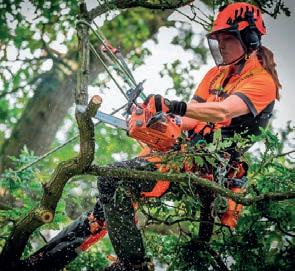
Autumn’s arrival signals a busy time for many arborists, but I hope you enjoy your downtime with this issue. If you were at the APF, would you agree it was one of the best?
Check our review on page 10.
Among those who went is our interview profile, Jack Newcombe from Fareham. He’s been running JN Tree Care for a decade, and steady progress makes for inspiring reading on page 12.
One trend at this year’s APF was the rising number of tree suppliers and related products such as shelters. This is an area more arborists
are becoming involved. On page 38, our Meet the Supplier is Greenfix, which offers a range of innovative solutions. We’re also covering tree tags (P40) and incentives and reasons for woodland planting (P20), which will encourage more activity from your land-owning clients.
Tree removals because of ash dieback continue across the UK. On page 16, there are some amazing end results from these fallen trees, which can be seen at a new exhibition in Edinburgh. Meanwhile, if you’re finding dealing with
increased chip as a byproduct from felling, then A.W Jenkinson is ready to help –check out page 28.
As ever, we have plenty of kit and other regulars. And to round things off, don’t miss Arb in Action on page 50 for some jaw dropping photography.

MANAGEMENT
Eljays44 Ltd BizSpace, Courtwick Lane, Littlehampton, West Sussex, BN17 7TL
EDITORIAL
Features editor –
Rachel Gordon proarbeditor@eljays44.com
Content director –
Nina Mason
nina.mason@eljays44.com
Senior subeditor –
Katrina Roy katrina.roy@eljays44.com
Subeditor –
Carmel Mary carmel.mary@eljays44.com
ADVERTISING
Commercial director – Luke Chaplin
luke.chaplin@eljays44.com
Tel: 01903 777 582
Sales executive – Lewis Everle lewis.everle@eljays44.com Tel: 01903 777 588
PRODUCTION
Design – Kara Thomas
Printed by Stephens and George Ltd
Published by ©Eljays44 Ltd
CIRCULATION
Subscription enquiries –Laura Harris laura.harris@eljays44.com
Pro Arb is published four times per year by Eljays44 Ltd. The 2024 subscription price is £50. Subscription records are maintained at Eljays44 Ltd, BizSpace, Courtwick Lane, Littlehampton, West Sussex, BN17 7TL, UK. Articles and information contained in this publication are the copyright of Eljays44 Ltd and may not be reproduced in any form without the written permission of the publishers. The publishers cannot accept responsibility for loss of, or damage to, uncommissioned photographs or manuscripts.
Managing director – Jamie Wilkinson
jamie.wilkinson@eljays44.com
Divisional director – David Griffiths david.griffiths@eljays44.com
FOLLOW US ONLINE proarbmagazine.com
Follow us on Twitter @ProArbmagazine Like us on Facebook Proarbmagazine
Connect to our LinkedIn group Pro Arb UK
For careers in arboriculture and horticulture go to: horticulturecareers.co.uk
If you would like to send us press releases to post online, please email: content@eljays44.com
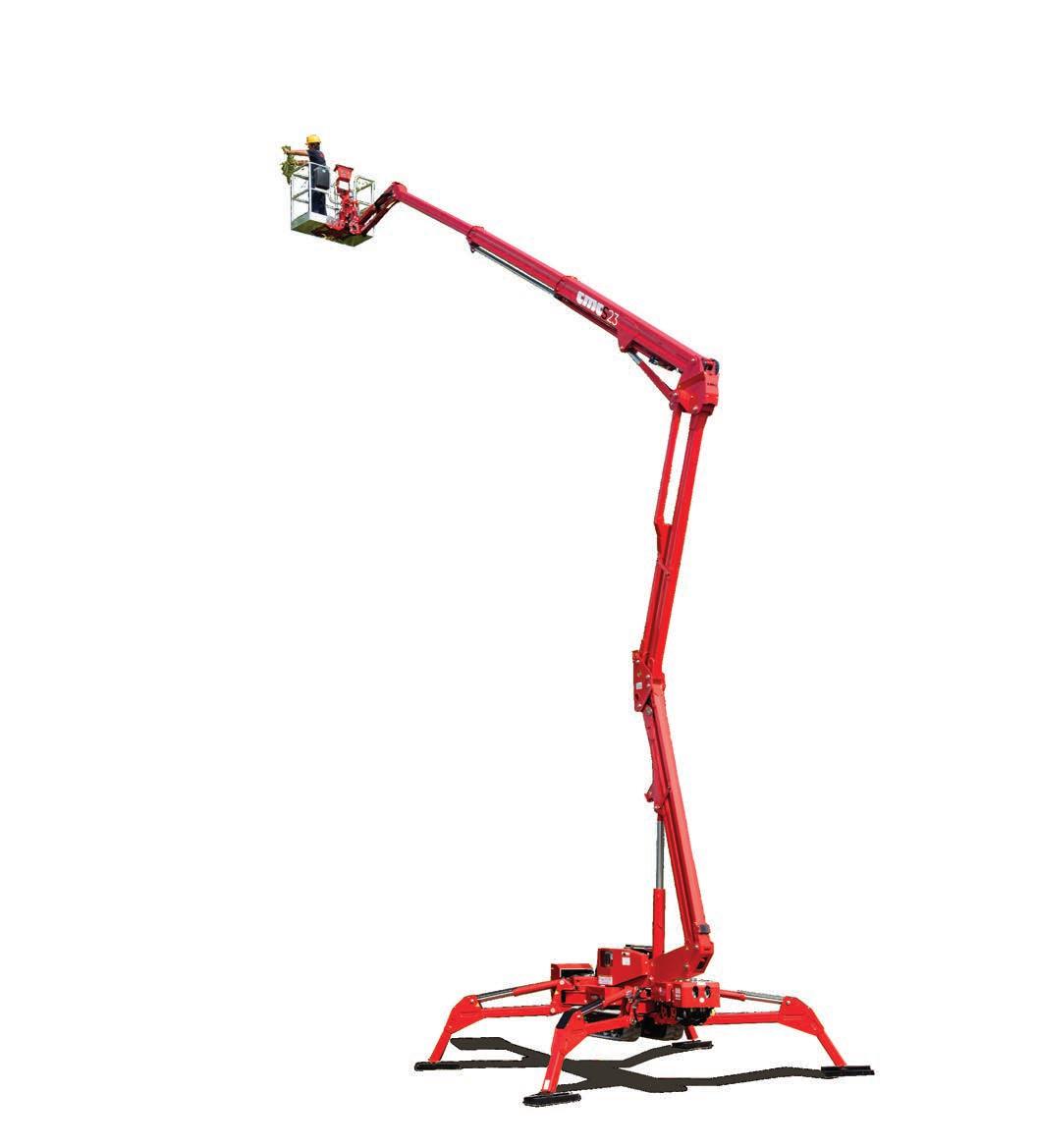
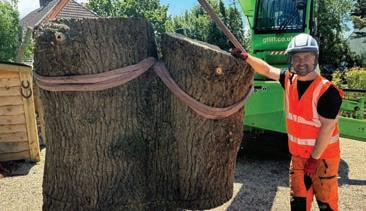

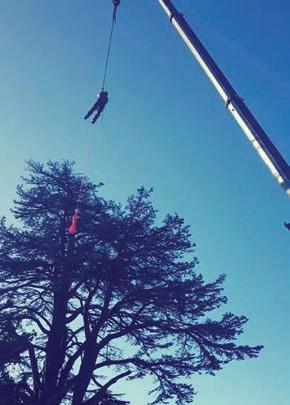

Interview – Jack Newcombe
Fareham’s JN Tree Care is one to watch
Rising from the ashes
Art from ash at Edinburgh’s Royal Britannic Garden
Tree Health – Dr Luke Hailey
Learning from horticulture missteps
Top tips – Woodland Planting Benefits for increasing the UK tree stock
Matthew Rowden –developing a new crane course
Rising demand prompts need for specialist training
Standing up for Richmond Park’s trees
Tim Roser’s campaign to stop ‘extreme pruning’
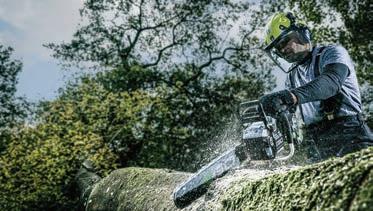
Opinion – Josephine Hedger
The H-Team ambassador assesses the two-rope system
Chainsaws – EGO’s CSX5000
High performance battery model impresses pros
Chainsaws – Makita’s new XGT range
Rear-handle launches deliver extension runtimes
Meet the Supplier – Greenfix
Innovative solutions to support professional planting
Tree tags from Landmark Trading
Tree identification made simple
Vermeer wood chippers – on parade
Meeting the needs of expanding tree care firms
IPX 4 – what’s it all about?
Stihl’s Reuben Wilson on understanding this important rating
Meet the eCompact Air
Norwegian manufacturer Paxster’s electric utility vehicle
A.W. Jenkinson forest products
Focused on wood chip collection with great
Notch Equipment: What’s new?
Products to support high climbers
Product DNA – FSI’s B31-980
A
National Tree Safety Group – new guide
Spotlight on practical risk management
CTC Recruitment – ‘temporary’ can mean opportunity
Being open to a short-term role can play to your advantage
Arb in Action –in association with Stihl
Showcasing incredible skills in the canopy
A landowner, Sukh Chamdal, has been fined £300,000 with an additional £89,000 in costs after illegally felling protected trees at Debden Hall Estate in 2021, with fines also handed to his arborists.
Epping Forest District Council took the action under the subject of a woodland Tree Preservation Order. This was an offence under Section 210 of The Town and Country Planning Act 1990.
In passing sentence, the judge, Mr Recorder Clegg KC, noted this case represented the most significant of its nature.
Chamdal fine of £300,000 was reduced to £200,000 due to his guilty plea within three months.
In addition, the council also prosecuted the arborists responsible for carrying out the tree works. They both pleaded guilty in June 2021 – Jan Lloyd was fined £20,000 plus costs and Watson Thomas was also fined £20,000 plus costs.
Chamdal also agreed to plant 101 new trees and cover the council’s costs.
Councillor Paul Keska, said: “The council’s dedication in pursuing the prosecution, hoping it will deter future offences and highlight the council’s commitment to enforcing tree protection and planning regulations. eppingforestdc.gov.uk
Stihl has named the UK team who will take part in the Stihl Timbersports World Championship, to be held in Toulouse, France on 8 and 9 November.
They include British Pro champion Glen Penlington from Knighton, Wales, who cliamed his third British title in a row in June at the Royal Three Counties Show, Penlington scored well in the Underhand Chop, Single Buck and Standing Block Chop and was faster than his fellow competitors in all three disciplines, and achieved a new personal best time in the Single Buck
Other team members are Rob Chatley from Hanley Broadheath in Worcestershire, Graham Turner from Penicuik, Scotland, Tom Redmond from Bere Regis, Dorset and George Spencer from Hereford.
This British team for the 2024 World Championship is the same as the team that travelled to Stuttgart for the 2023 World Championship. Last year, the UK team finished in 14th place.
Vicky Tween, Stihl Timbersports team manager, spoke. “Individually, they are all really strong athletes, so it’s always great to see
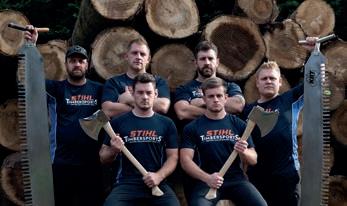
what they can do when they come together. Last year didn’t go as planned for the team, but it was a useful learning experience, and I’m certain they will improve this year.”
They will be joined by the British Rookie Champion, Jack Morris, also from Knighton, Wales. He will also attend the three team training camps that take place in the lead-up to Toulouse.
In the Team World Championship, each team consists of four athletes who take on four Timbersports disciplines in a relay - the Stock Saw, the Underhand Chop, the Single Buck and the Standing Block Chop.
Teams compete in knock-out rounds against each other, with the fastest proceeding to the next round. Athletes with the quickest times in their national championships stand the best chance of being selected to represent their country.
To find out more, watch the Stihl Timbersports YouTube channel and visit: stihl-timbersports.com
Wood chipper manufacturer GreenMech has appointed David Blackwood as its new sales director, following the retirement of Martin Lucas.
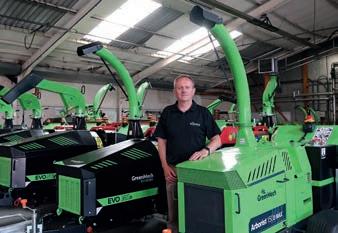
Blackwood has gained over 30 years’ experience in the machinery sector including with Massey Ferguson, Kubota and Stocks Ag. He commented: “I am really looking forward to working with GreenMech –a British engineering success story and a brand synonymous with developing innovative products for the arboricultural, landscaping and green space industries. Having started at the beginning of July, I feel I have already gained huge insight into the market, its challenges, but also importantly, its opportunities.”
greenmech.co.uk
Tree specialist Dr Mark Johnston is inviting people to download his autobiography – Planting Ideas in the Urban Forest – free of charge via his website. He explained: “The book is not a commercial venture as I’m not making any money from it. It’s just my way of saying ‘thank you’ for 50 glorious years in the tree world. In many respects the book is a personal history of British and Irish arboriculture over the past 50 years.” Awardwinning Johnston, who lives in Belfast, has worked as a tree surgery contractor, tree officer in local government, consultant in private practice, government adviser and university academic. He has been involved in numerous initiatives to support urban greening, including city-wide projects in London, Dublin, Cardiff, Glasgow, and Belfast. To download the book visit: markjohnstontrees.com

Lantra wants to set the record straight about what it does following what it described as “hearsay and myth” appearing in an online chat forum relating to the arb and forestry industry.
In a statement, Lantra said it “continues to provide qualifications and training to ensure high standards are maintained within the industry.”
Its qualifications and training are delivered by its network of established training centres across all parts of the UK and Ireland. These qualifications and training provide the vehicle needed to develop a career in land-based industries, such as forestry and arboriculture. Meanwhile, training

centres work with qualified instructors and assessors to deliver qualifications.
Lantra said it invests time into instructors and assessors “to ensure that their skills for teaching and learning, as well as assessing, are kept up to date and meet the highest standards. Lantra emphasised its role in ensuring best practices within land-based industries, focusing on safety for workers and the public.
Lantra said it has become a trusted provider of training and qualifications, particularly in forestry and arboriculture since 2008.
It added: “Qualifications, developed through stakeholder engagement, remain valid for life, although the organisation follows Health and Safety Executive guidance, recommending a skills refresher every three years. Despite common misconceptions, Lantra qualifications do not expire. (for occasional users) to five years (for professionals).”
Lantra started life as the Agricultural Training Board. In 1994, ATB ceased trading and in 1994 which led to the formation of Lantra. It runs courses throughout the UK, as well as overseas. For more information visit: lantra.co.uk
‘BITING’

The identity of a rare insect that can bite people has been confirmed after a sighting in London. The plane lace bug (Corythucha ciliata), last seen in Bedfordshire in 2006, is a tree pest that can cause mild rashes if it bites. Adults are small and measure up to 4mm in length, their bite cause a mild rash to the skin.
The Forestry Commission has asked for sightings to be reported and Andrea Deol, head of plant health forestry and contingency, said: “We have identified the plane lace bugs on a number of plane trees in central London.
“We encourage the public to report any suspected findings via our online portal TreeAlert.” The plane lace bug native to North America, it is widespread in Europe but not endemic to the UK.
In some cases, the reaction to biting can be more severe. It was reported that in 2011, in the Piedmont region of north west Italy, a 23-year-old man and woman aged 18 went to the emergency unit having developed a rash overnight on the hands, neck and head with around 100 tiny hives.
The bugs feeds on plane tree leaves, causing early leaf drop (light coloured marks) near leaf veins. The pests can cause leaves to drop off earlier than expected. There is no requirement to take statutory action as they are not a regulated quarantine pest classified as having unacceptable environmental, economic or social impacts, there is no requirement to take statutory action. gov.uk

Dame Judi Dench has called for a stop to planned tree felling that would allow the building of an £8 million annexe to Ripon Cathedral. Dame Judi said: “I fully support the campaign to protect the veteran tree in Ripon, along with the other healthy urban trees under threat. “As an ambassador for The Woodland Trust, which rightly views veteran trees as a priority, as they are irreplaceable habitat, I hope a solution can be found to protect this conservation area.”
The cathedral submitted plans in late 2022 for a two-storey structure on part of the public open space known as Minster Gardens. A total of 11 trees on the land are at risk, including a veteran beech.
Councillors on North Yorkshire Council are due to make a decision on whether the scheme can go ahead, with the annexe providing a new song school for the cathedral choir, a cafe, toilet facilities and disabled access.

More than 2,700 people have signed a petition protesting against the felling.
The Very Rev John Dobson, Dean of Ripon, previously said: “No one takes a decision to cut down a tree lightly, but we believe this new development will bring a wide range of benefits to the city. We are planting 14 trees around the development and a further 300 on land which has been made available to us at Studley, as well as increasing the biodiversity of the green space created.
A council leader from Hampshire is calling on the government to beef up tree protection laws that relate to subsidence. Simon Martin, leader of Fareham Borough Council, said trees were increasingly being held responsible for damage to buildings if there is subsidence.
He has written to deputy prime minister Angela Rayner, telling her that insurance companies usually sought a remedy of removing the trees involved, even where they are covered by Tree Preservation Orders. Further, he said councils could be exposed to “substantial compensation claims” if they refused the insurers’ felling applications.
Martin said: “When trees are implicated as the cause of subsidence, the default position of insurance companies in the large majority of cases is to seek the removal of the tree. If the council refuses consent, it becomes immediately liable to potential compensation claims from the owner of the property affected by subsidence.”
The council has no budget for compensation claims and had allowed 135 out of 144 felling
A tree surgeon from East Kilbride in Scotland admitted to health and safety failings after his young employee lost part of their leg. The case was heard at Hamilton Sheriff Court, where self-employed Christopher King, 41, was ordered to carry out 200 hours of unpaid community work.
The accident happened as work took place in Cypress Avenue, East Kilbride. Stephen Milloy, then aged 22, suffered severe injuries when his trousers became caught up in a machine he was using to remove a tree stump.
He had used the stump grinder but put it down in order to clear away some bricks. The machine should have switched off automatically when not attended to, but a safety mechanism had been disarmed, so it kept running. Milloy’s trousers became entangled and his leg was pulled into the machine, being struck
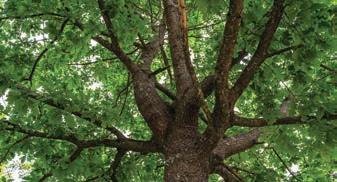
applications in two years. Mr Martin said new legislation should make felling a “last resort”.
He said the environmental value of the tree should be considered and other options used where suitable such as installing underground root barriers. He added compensation claims should be “limited to situations such as those where it has been demonstrated that there is no viable alternative to felling a tree and the local authority still refuses consent”.
The Association of British Insurers claimed felling was not its default solution to protect homes. “It is a balance between preserving greenery, while ensuring that homeowners can get competitively priced home insurance.”
repeatedly by the grinding wheel. He was taken to hospital with serious injuries but doctors were unable to save his leg which was amputated below the knee.
Sheriff John Speir chose not to impose a financial penalty after expressing concern at King’s ability to pay and the viability of his business. The court heard that Milloy “remains friends” with King, despite the accident, which happened in 2019, and still continued to work for him. Millroy has not sued for compensation and attended court to lend support to the accused, who trades as All About Trees.
King’s lawyer said her client “takes full responsibility for what happened”. She said: “This happened at a time when his health and safety practices were not as they should have been. It’s been a wake up call that generated a complete overhaul of his business. There was an immediate acceptance of culpability and a determination to ensure nothing like this could happen again.”
She told Sheriff Speir: “He was clearly distressed by what happened, not least because of his friendship with the injured party.”

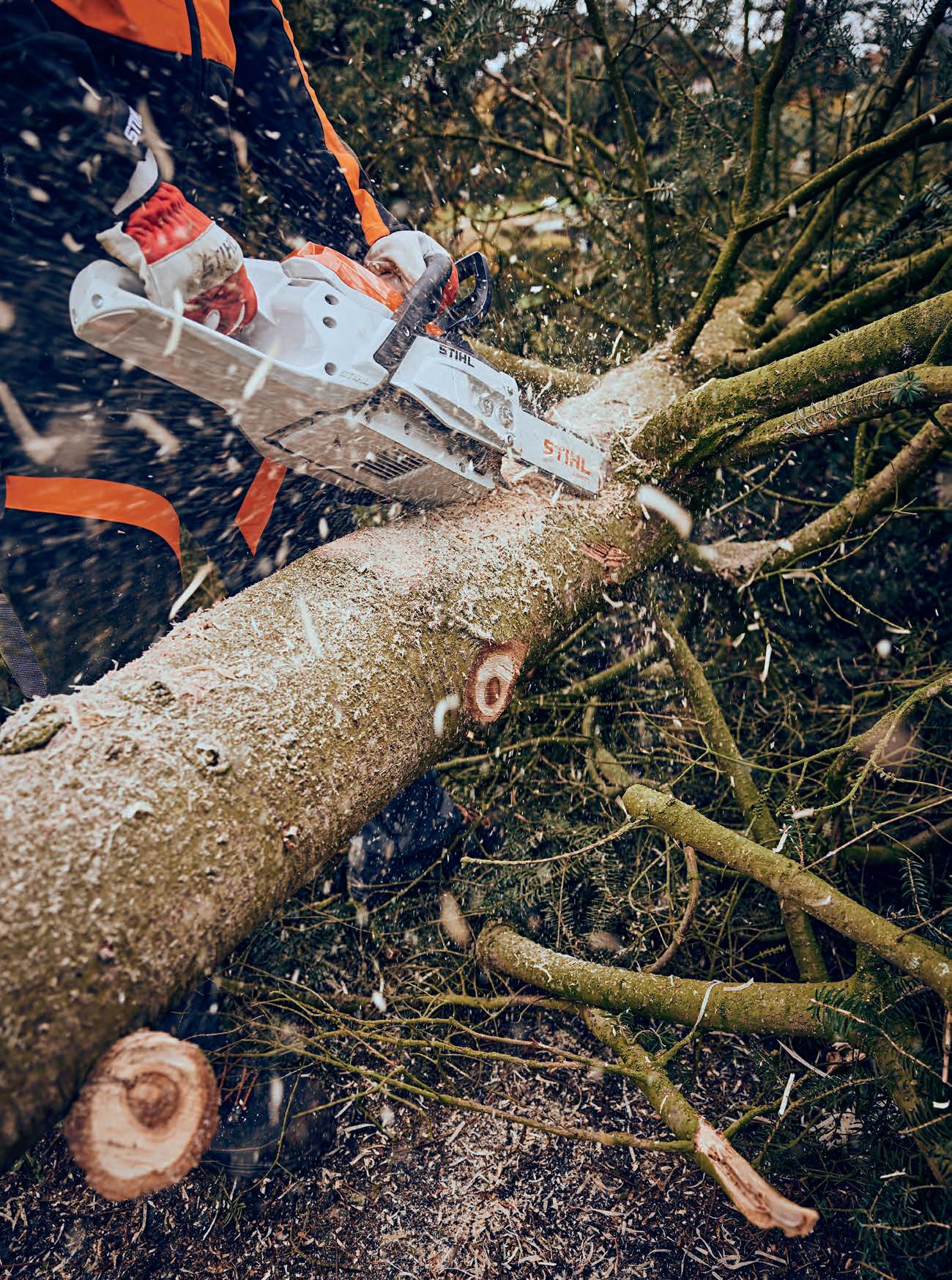
Experience unprecedented performance with STIHL‘s extensive range of professional grade battery-powered tools for commercial users.
IPX4 certification lets you continue working with confidence in the rain. Long-lasting smart batteries deliver consistent power throughout the whole battery charge. And fast chargers deliver quick recharge times so you and your tools are always ready for the job.
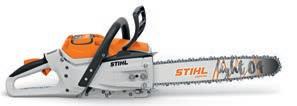
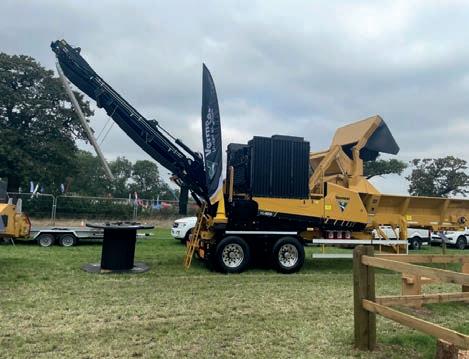
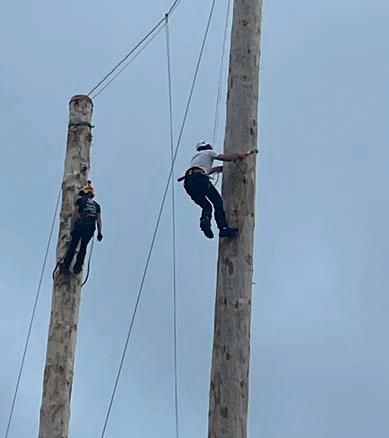



This year’s three-day APF exhibition had some 20,000 visitors and around 300 exhibitors spread out across the vast showground. Organisers declared the event was “the best yet” and there was something for everyone – if you came from the forestry and arb sectors. It was said that arborists would find this APF right up their street – in previous years, it had arguably more of a forestry slant. It is a difficult balancing act, but certainly the Friday in particular proved popular with the tree surgeon community. One niggle was the lack of internet reception, making it hard to find those who were lured away by the attractions.

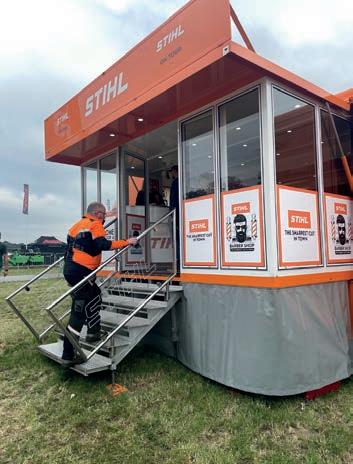



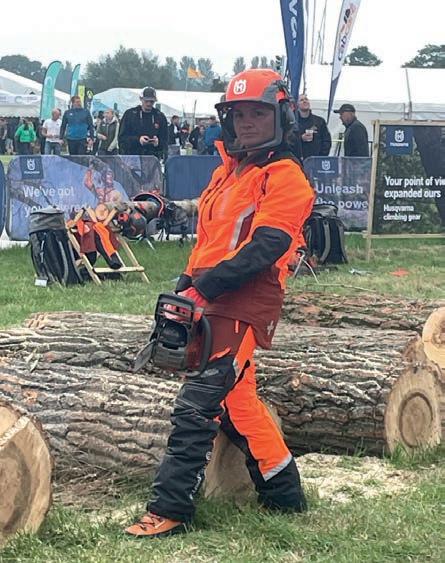
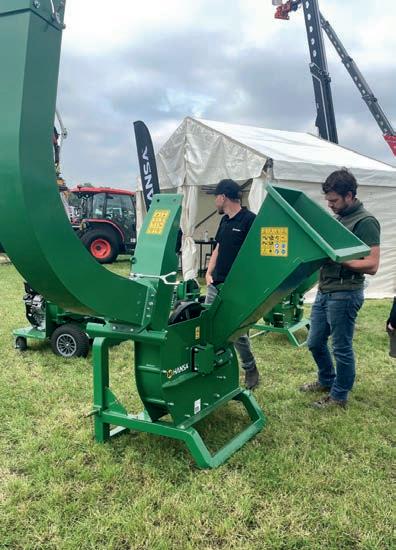
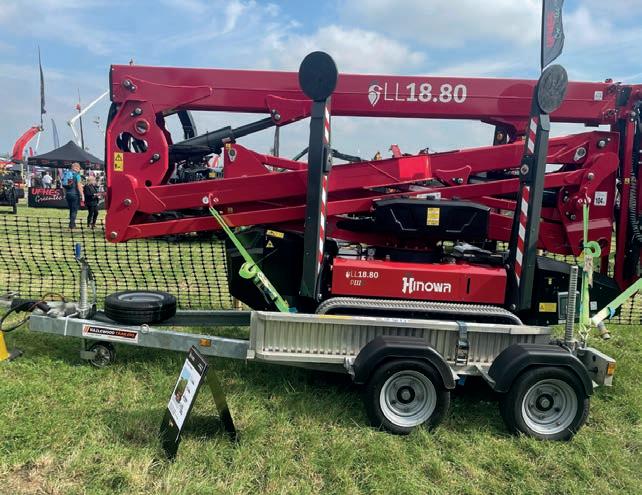
Decent weather throughout meant those who camped stayed dry and there was good support for the well-run competitions – in particular Husqvarna’s Pole Climbing Championships. This was alongside the fully charged expo, showcasing machinery to tackle the heaviest tasks, along with plenty of tree-related retail therapy. Then there were seminars and networking aplenty, along with bars and many food stalls – although the sky-high prices charged were far from appetising. The organisers will no doubt be more than pleased with how it went – and will already be gearing up for the next APF, which will take place on 24, 25 and 26 September 2026, the show’s golden anniversary.
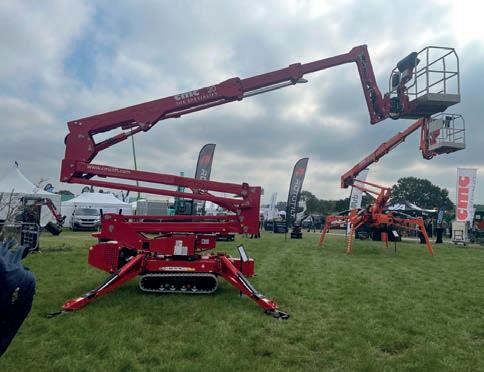



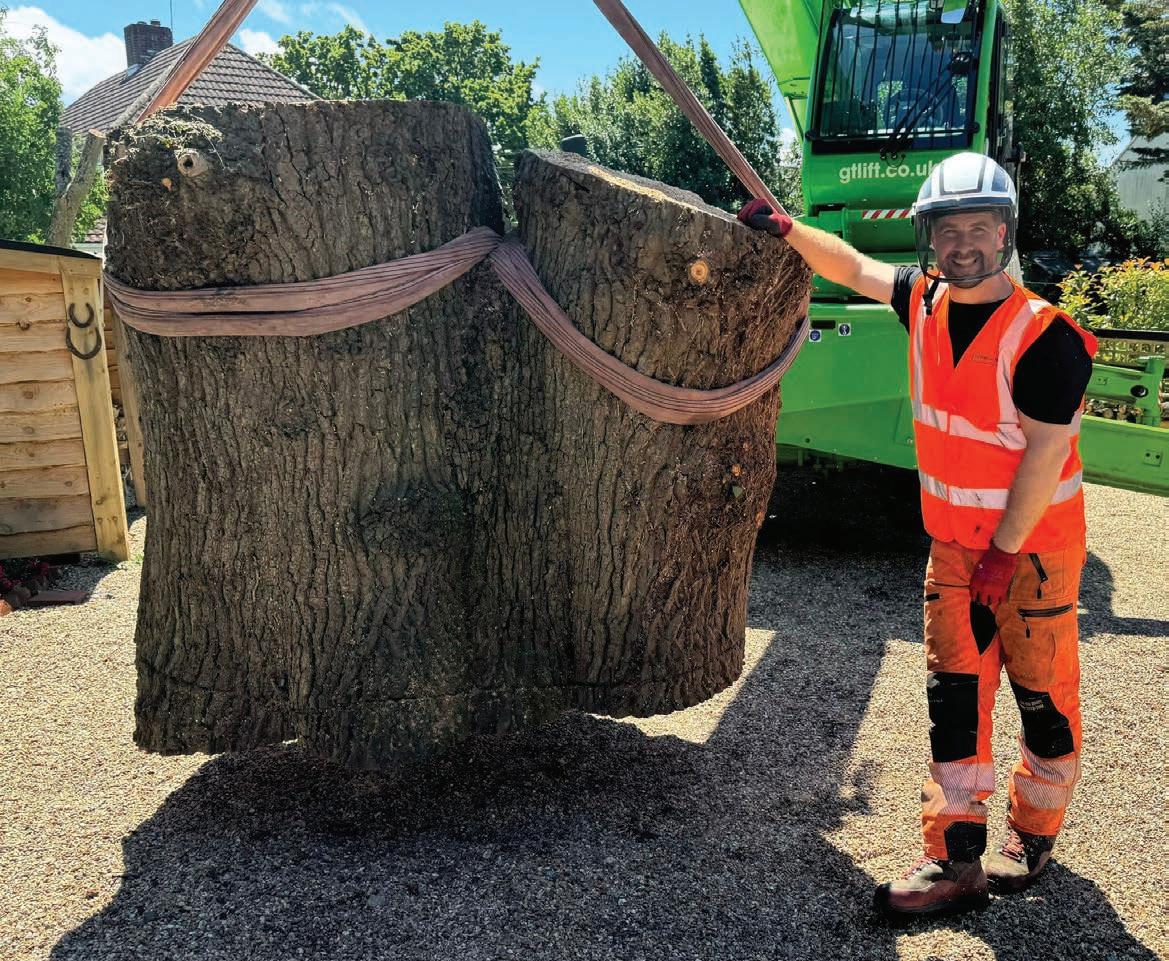
PRO ARB FOUND OUT ABOUT THE HAMPSHIRE-BASED FIRM’S STEADY EXPANSION FROM FOUNDER JACK NEWCOMBE
There are many good tree care companies in Hampshire but one that shines particularly bright is JN Tree Care Ltd based in Fareham. The business was founded by Jack Newcombe a decade ago and has grown steadily, year on year. Looking back over the past 10 years, he says running his own business is often hard work, but he has no regrets. Even so, he admits to doing the office work from around 5am every morning and by 7am, he’s at the yard – this is as well as doing the quoting.
“Starting early allows me to get on with the paperwork and I also ensure I always go to every job with the team. Even if I can’t be there all the time – it’s vital for me to meet clients, so that we understand what needs doing and they know I’m committed to us doing great work.”
This is certainly backed up by hundreds of favourable reviews, where clients praise JN
Tree Care Ltd’s ‘professionalism and quality of work’, ‘the friendly and courteous team’, and
I also work with other professionals within the arboricultural sector, including tree officers, enabling us to provide indepth and comprehensive tree reports. We want to offer the complete service
‘sensible pricing’. Many are repeat customers. He says that he often feels like he’s “spinning a
lot of plates”, but clients at least seem unaware of this.
The company covers Hampshire and surrounding areas, but Newcombe says many jobs are relatively easy to reach, due to the strong local demand. Although the business started off doing domestic work, commercial is now an increasing part of its workload. “We won a contract with Fareham Borough Council last year and that was a breakthrough moment for us. Since then, we’ve also picked up more commercial work, although domestic is still about half of what we do.”
Newcombe has a team of six, both employed and subcontractors, and he also has close working relationships with a few other firms he trusts because they have the same high standards as JN Tree Care Ltd. “It allows us to complete a vast array of jobs. I also work with other professionals within the arboricultural
sector, including tree officers, enabling us to provide in-depth and comprehensive tree reports. We want to offer the complete service.”
Newcombe chose tree care as he knew he wanted to work outdoors and loved studying at Sparsholt College after leaving school. He then gained experience at local tree surgery firms, before joining a utility company as an arborist, which included working with powerlines. “This was a good move because there‘s so much
This was a good move because there‘s so much emphasis on health and safety –it’s drilled into you
emphasis on health and safety – it’s drilled into you. It’s something I continue to focus on, and this has also helped us secure work. But I reached a stage where I wanted to start my own business as I’d worked for other firms for around nine years, and it was a feeling of now or never – and so I set up JN Tree Care, and I’ve never looked back.”
From small beginnings – a van and a few chainsaws – JN Tree Care soon started to grow and now has a client base of around 3,500. Newcombe says he had a clear vision for the business, which included “investing in the best kit, delivering high levels of reliability, and having
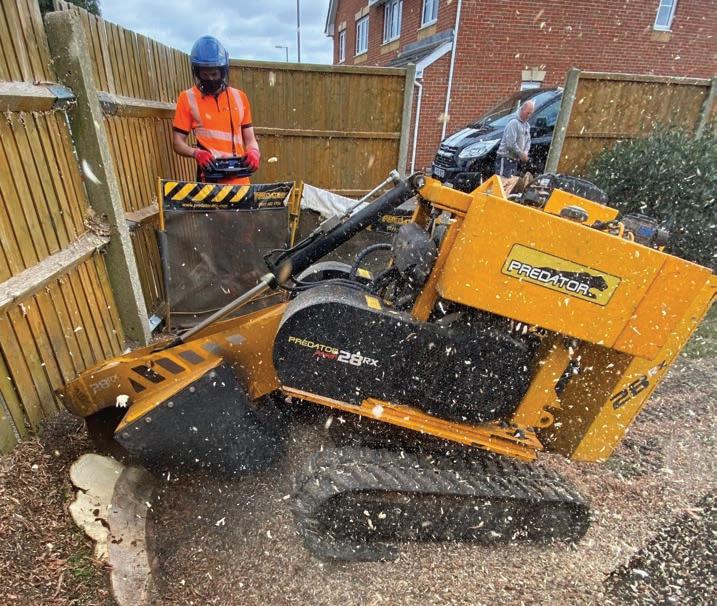
a qualified team that looks smart in uniforms and who carries out tidy workmanship. We also have well-kept vehicles with good signwriting –I may have a touch of OCD, but I want things to look right and clients to know they are dealing with a professional business they can rely on.” Additionally, he provides a round-the-clock call-out service, alerting clients in the event of anticipated severe weather. Newcombe has also used social media to warn local people when
rogue traders are operating, something that continues to blight the tree care sector, and JN Tree Care has been impersonated several times over the years. JN Tree Care now possesses a substantial amount of equipment, including four vehicles: Ford Transit vans, two Rangers, a Valtra forestry-spec tractor, a Botex trailer, and a Hyundai digger equipped with arb attachments. Newcombe also has a number of Predator stump grinders, including offering
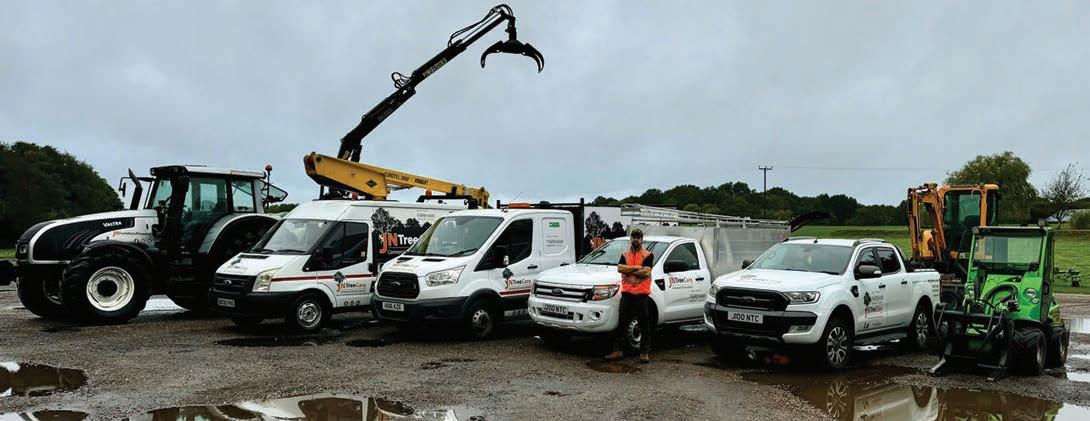
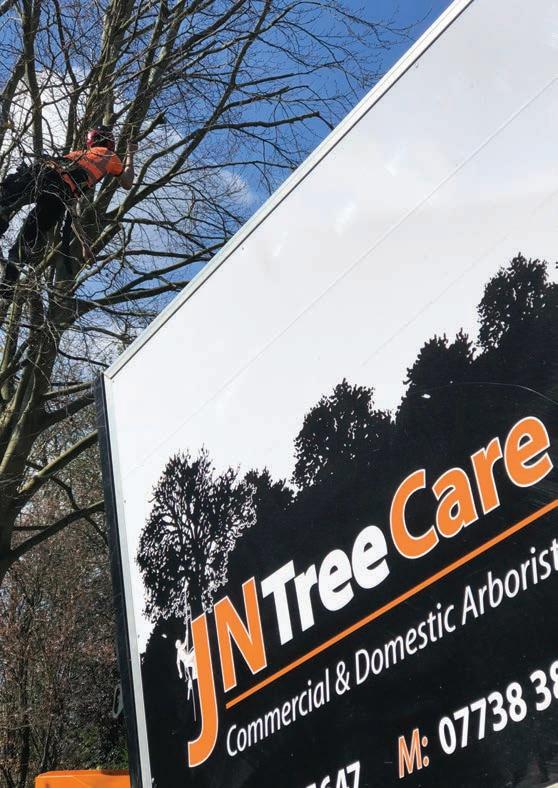
narrow access with remote control, Forst wood chippers, and an Avant loader.“ We also hire in kits when necessary, such as when we’ve had to do large-scale ash dieback or a site clearance. I like working with big kit like the Merlo Roto and
I want things to look right and for clients to know they are dealing with a professional business they can rely on
would be interested in buying one in the future –although they are quite expensive.”
The company also offers firewood and large timber slabs. He works closely with Touchwood
Creations, which is a small, independent, local bespoke timber furniture business, and Newcombe has various firewood machinery and sawmills, which allows him to sell firewood and slabs of timber.
Newcombe says mechanisation is bringing benefits to the arb sector, allowing greater productivity, although there will always be a need for people. “This is probably one of the biggest challenges we face. I tend to work with more experienced arborists, as trainees have not always worked out. We’ve had people who’ve not been up to scratch and are unable to put their phones down. We’re a great team to work with, but let’s face it, machinery is making a difference, but arb is always going to be about hard graft.”
He does not rule out bringing on more trainees in the future, but he says his existing team and work with other firms are currently going well. That is not to say everything has always gone like clockwork; a number of years ago, he experienced a severe kit theft. “The police think it was an organised gang, and unfortunately, they didn’t catch them. It was a big setback, and although we were insured, you still end up losing out, and premiums also rise.”
However, JN Tree Care has fully recovered, and Newcombe advises cautious expansion. The plan includes more mechanisation and forestry work. “We have a lot of work, but I want to do more on social media.” He adds he has no
immediate plans to become an AA approved contractor, although he has not ruled it out. “I know we have good processes and service and so do our clients – including those that are public sector. For that reason, you have to ask if it’s worth it.”
machinery is making a difference, but arb is always going to be about hard graft
The Hampshire tree care sector is a competitive one, but there’s no doubt that others will see JN Tree Care Ltd as the one to watch. Here’s to the next 10 years at the top of the tree.
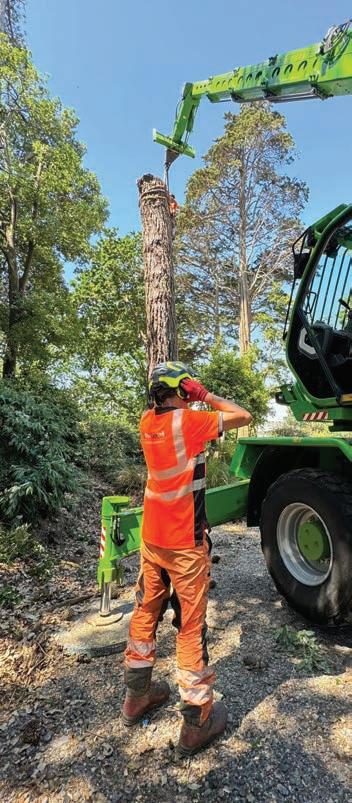
By simply scanning the product datamatrix, all related information will automatically show up on a dedicated dashboard:
• General product information
• Lifespan
• Inspection frequency
• Product retirement date
• Instructions for use
• PPE Inspection Procedure and Checklist
All the products in your existing PPE inventory can easily be imported into the application. Products from other brands can also be logged manually. Prioritise safety, save time, stay compliant.





Edinburgh’s Royal Botanic Gardens is hosting Ash Rise, an exhibition featuring items made from wood taken from trees affected by ash dieback. The exhibition runs from 13 September to 12 January 2025 in the Garden’s John Hope Gateway visitor centre on Arboretum Place, before touring to other venues across Scotland. It is free to enter and open from 10am each day.
The event is designed to celebrate the resilience of the legendary ash tree to show
how varied uses of its timber can be. Exhibits included a five-metre-long kayak, a guitar made from wood and concrete, and artwork inspired by falling seeds.
Ash Rise was conceived by the Scottish Furniture Makers Association, Scottish Forestry and the Association of Scottish Hardwood Sawmillers. They selected 20 furniture makers, designers and artists from across the country to produce works using wood from diseased trees felled in Killearn, Stirlingshire.

One of a kind
The unique objects are now on display, to create a positive visitor experience but also to raise awareness of the disease and its impact. Ash dieback (Hymenoscyphus fraxineus) is present throughout Scotland and is caused by a fungal pathogen,

The event is designed to celebrate the resilience of the legendary ash tree to show how varied uses of its timber can be
which spreads via spores carried on the wind or through rain splashes.
Amy Porteous, producer of creative programmes at the Royal Botanic Garden
Edinburgh, comments: “Ash is one of our native hardwood trees, a fantastic resource and previously common across the UK, but our natural landscapes are now visibly and permanently changing as millions of trees succumb to the disease.
“However, there are seeds of hope. Despite initial fears that over 90% of ash trees would be lost, it now seems that some individuals have natural resistance. As this genetic tolerance to the pathogen is passed down through the generations, there is now the possibility that long-term, the species will survive and recover. Until that happens, the exhibition shows how, despite the devastation wrought by the disease, ash has the potential to live on through the skill of Scotland’s makers, artists and designers.”
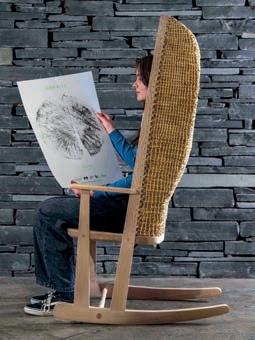
Tom Addy, Ash Rise project coordinator and furniture maker says: “The native ash is one of our most precious resources here in Scotland and for Ash Rise we wanted to showcase the potential of what has been described as the Tree of Life. Acknowledging the impact of ash dieback led us to invite furniture makers, artists and designers to showcase the creative potential of a single ash tree. The results are not just a homage to the Scottish ash but an insight into the transformative power of furniture making and design to breathe new life into locally sourced materials.
The 20 makers, artists and designers whose works will be showcased in the exhibition are:
• Kevin Gauld - Skila, Orkney chair
• Naomi Mcintosh – Potential, an installation of sculptural columns
• Alexander Johnston – Dieback, an installation of ash columns
• Angus Richardson –The Phoenix chair
• Angus Ross – Clova Chairs
• David Buchanan-Dunlop and Steven & Ffion Blench - Killearn Side Tables
• Duke Christie – Fire Vessels
• Helena Robson –Agricultural Hand Tools
• Jack Sheahan – Caithness Chair
• Kate Owens –Thud (Killearn autumn drape)
• Kirsty Macdonald – Heilis
Ash has long been a preferred wood for a variety of manufactured products. These have ranged from Tutankhamun’s chariot wheels to John McEnroe’s tennis racquets. The wood has long been valued for its flexibility and strength and this native tree is a common site in gardens, parks and woodland. Ash trees also provide a habitat for around 1,000 species including birds, mammals, invertebrates, plants and lichen.
“The documentary film shown alongside the beautiful works on show in the exhibition aims to educate visitors on the value of working with locally sourced wood and highlight the impact of the disease and the work being done by Scottish Forestry to manage it.”
Ash Rise will also see groups of young people learning to work with wood through hands-on activities in woodland settings throughout Scotland through a programme from Scottish Forestry’s Outdoor Woodland Learning network.
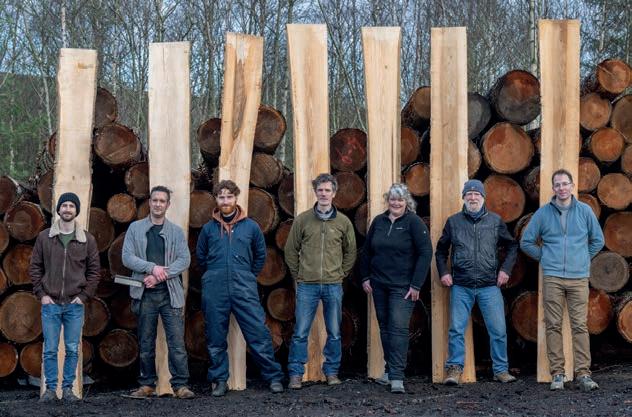
• Nikita Wolfe Murray – In/organic
• Rebecca Kaye –Weatherings I, II 7 III
• Richard Goldsworthy –Past, Present and Future
• Sam Chinnery – Ash Rise Bench
• Stephen Thompson –Kayak (Iqyax)
• Stevi Benson – Time & Space
• Rory Dowling, Zachie Morris, Caelin Harrington, Nicholas Denney –Concentric Harmony
• Sam Cooper, Richard Platt – The Tower Desk and Canopy Chair
• Tom Cooper - Emergence
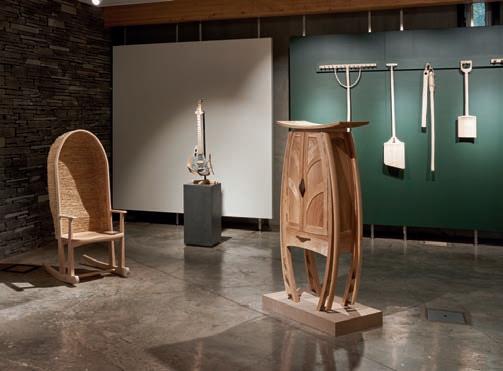

Hearing this issue will be distributed at the Futurescape event, I wanted to highlight some significant landscaping related issues we observe impacting plant health. True landscaping professionals would never dream of committing the worst of these offences, though there are also some more subtle examples, and all are worth discussing in the name of increased awareness.
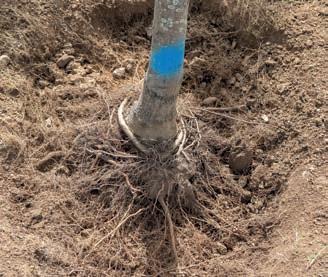
No staying power:
While we would always like more plants in general, over-planting spaces can be their downfall.
For example, we have seen trees over two metres tall, planted in a double row within a planter just over a metre wide, obviously planted with their root balls touching. Any empty soil beneath was filled with small shrubs. It looked great just after planting, but it didn’t last for long. When there are too many plants for a given space, competition for water and nutrients can become intense. This leads to decline, even if extra irrigation and nutrition are provided.
Planting density should allow adequate space for plants to establish and preferably reach their mature size, factoring in pruning plans where appropriate. Thinning plants over time is an option but may lead to increased disease risk or root damage.
The root ball from the nursery is not all a plant needs to survive long-term. In the nursery, plants are watered and fed in such a way that they can thrive with a small root ball but, even then, usually only for a year or so. To establish and survive,
trees and shrubs need appropriate available rooting volume to root out and support themselves in terms of water, nutrients, and stability
trees and shrubs need appropriate available rooting volume to root out and support themselves in terms of water, nutrients, and stability. Root restricted or pot bound plants ultimately suffer drought stress, even if soils are moist.
Regular readers should be familiar with buried root collars by now. Burial of this ‘root flare’ is associated with stress and disease. Care should be taken to determine the true root collar, rather than a graft union or adventitious root. Burial is also not a valid tree support system.
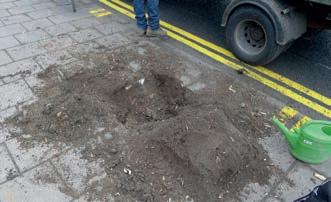

Plants often arrive from nurseries with root issues, making planting a valuable opportunity to correct them and enhance establishment rates. Expose the root collar, remove circling roots and foreign materials, and gently disturb the root ball to encourage outward rooting. Consider planting on a slight mound to compensate for soil settling.
Proper soil care is also essential; disturb it as little as possible. Unfortunately, I have witnessed over £100,000 worth of trees and shrubs planted into pure clay, leading to decline.
Luckily, by incorporating compost and fertiliser into the wider area, with additional feeding, we made these plants thrive. On multiple sites, buildings have been placed around existing specimen trees, leading to their deaths from unconsidered environmental changes or little to zero-root protection during construction. On the other hand, if a site is cleared of previous woody plantings, it is prudent to remove the stumps and root systems. Honey fungus is very common and can persist as small latent infections. It thrives on dead and dying roots, which provide it with energy to attack any new plantings.
Giving rooting the consideration it deserves and avoiding these mistakes will help to ensure beautiful and healthy future landscapes, which are long lived and benefit many people.
Luke Hailey, PhD, is the lead diagnostician and a researcher at the Bartlett Tree Experts Research Lab which services the UK and Ireland. He identifies tree and shrub issues and helps guide their management. His current research focuses on honey fungus management. bartletttree.co.uk
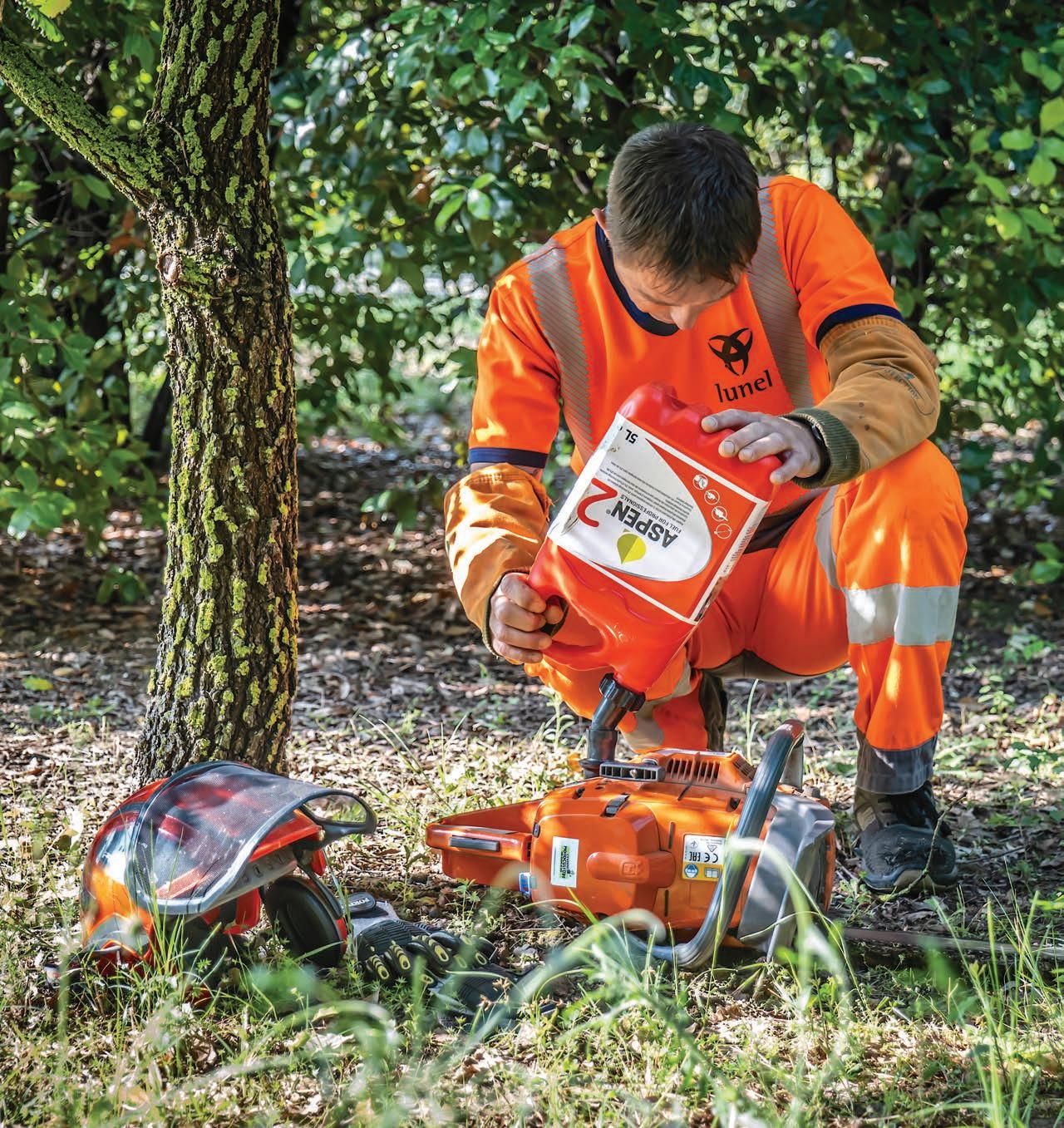
As alkylate petrol pioneers since 1988, you can be assured of highquality fuel in every can. Aspen alkylate petrol burns cleaner –resulting in equipment that starts easily, engines that won’t clog and fuel that doesn’t deteriorate over time.
Try our 2 or 4-stroke fuel risk-free with our money back guarantee.


If a client has land and is considering planting trees, there are clear environmental benefits as well as financial incentives available.
Under-utilised land gains a purpose Trees have far-reaching benefits for land, the environment and the future generations. Where there is community access, being out in forests and woodlands can help physical and mental wellbeing as well as allowing enjoyable social get togethers, such as for walking groups. Providing public access to woodland could allow for additional Forestry Commission payments. Landowners with a suitable site will need to invest in expertise if they want to see a healthy woodland established, but they should also reap the benefits. There is also the option of leasing the land – such as to Forestry England – where rent is paid and the woodland is planted and managed,
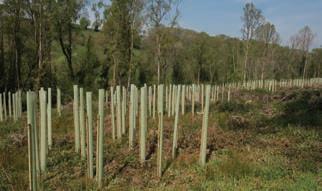
Resting and nesting places to support wildlife
Trees boost biodiversity and woodlands are home to a wealth of flora and fauna, especially when connected to encourage wider wildlife corridors. They provide food, shelter and places where young are raised. In addition, landowners can receive additional Forestry Commission payments for aiding nature recovery.
Create income from timber
Timber remains in high demand for building materials, fencing and logs. There is also a strong market for wood chippings as biomass fuel and this product is also used in agriculture and horticulture.
This is the process of compensating for carbon dioxide emissions – woodlands help in this process and landowners can benefit from a range of tax reliefs. Registering with the government-backed Woodland Carbon Code allows landowners to sell carbon units for every tonne. There are a number of schemes available that encourage new planting, including from the Woodland Trust.
Bring in new business opportunities
Woodlands may also be suited to a range of businesses such a glamping, mountain biking trails, forest schools, paintballing and game shoots – although there will also be costs in the form of the structures, any employees, maintenance and public liability along with other types of insurance. Tax advice should also always be sought.
Boost the local environment
Woodlands provide a natural form of flood management and improve water quality. Trees can also help to manage soil and nutrient losses, reduce erosion, and increase productivity by combining trees with crops and livestock for healthier soil – leading to more sustainable yields.
For more information visit: gov.uk/guidance/england-woodlandcreation-offer
The England Woodland Creation Offer covers standard capital costs and annual maintenance payments as the woodland establishes. Landowners, land managers and public bodies can apply to the England Woodland Creation Offer (EWCO) for support to create new woodland, including through natural colonisation, on areas as small as one hectare. An uplift in EWCO payments was announced by Defra and the Forestry Commission in March 2024.
This is part of the Government’s plans to achieve net zero by 2050 and put nature at the forefront to tackle climate change. The current maximum rate per hectare available from additional contributions will increase from £8,000 to £11,600 – a 45% increase. That will increase to £12,700 in stackable payments if the land is also eligible for the new Low Sensitivity Land Payment. Standard costs payments remain at up to £10,200 per hectare.
A new nature recovery premium payment option (£3,300 per hectare) has been added. This is designed to encourage the planting or natural colonisation of highly biodiverse woodlands next to ancient woodland.
Uplifts are areas like riparian buffers, flood mitigation and access. For example; payments for flood risk management have doubled from £500 to £1,000 per hectare, and recreational access has increased from £2,200 to £3,700.
Annual maintenance payments have been raised from £350 to £400 per hectare, per year, for 15 years – recognising that caring for new trees is vital if new woodlands are to flourish. Other grant schemes exist in Scotland, Wales and Northern Ireland.
Introducing the power of kick-start energy
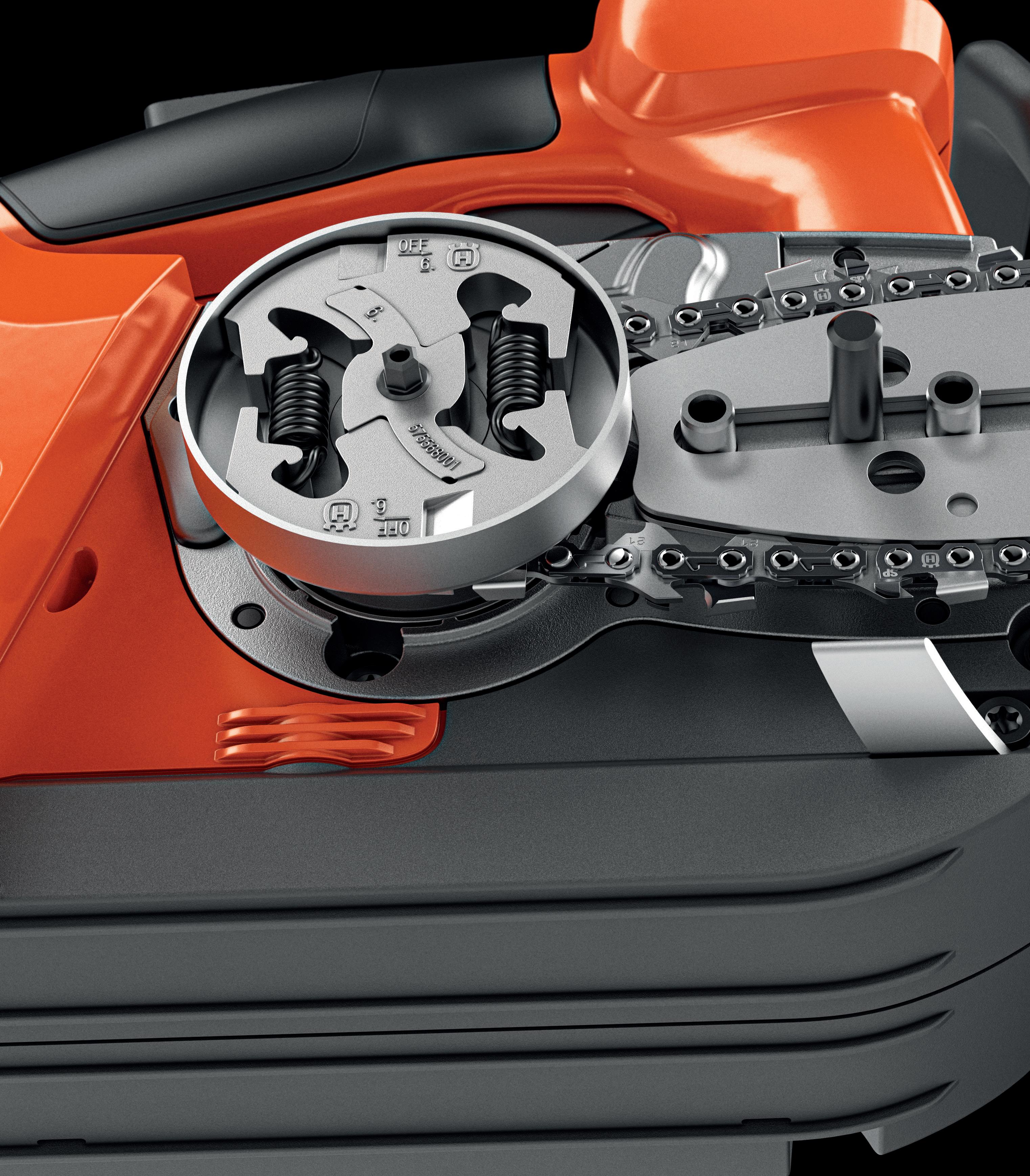
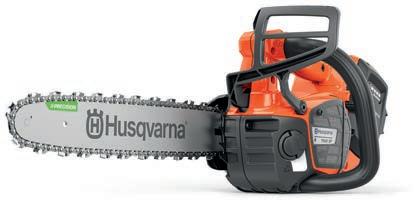

Cranes have been used in arboriculture for decades, and their popularity has increased recently with the advent of grapple saw trucks and Merlo Roto telescopic booms equipped with wood crackers and tree shears.
However, the challenge for many climbers is the crane-assisted manual dismantle, where a climber is up the tree rigging pieces and cutting them by hand from the canopy. It is, in many ways, the easiest and quickest dismantle, but can also be the most dangerous work you’ll ever do. In the UK, there is a problem as no formal training exists –the majority of climbers doing this work are essentially flying solo, relying on experience, luck and guesswork.
advises that, “where possible, the system should be securely attached to two loadbearing anchor points. Each anchor point should be strong enough to support the climber, work equipment and any foreseeable loading”.
I find this guidance well meaning, but impractical and in conjunction with crane work, it becomes dangerous. The risks to the climber in crane work are crush injuries and can result from incorrect slinging, causing a piece to ‘turn turtle’, anchor failure or overloading the crane. Either way, when lifting large pieces, where an error could be fatal, a speedy escape route is essential. This overrides the need for two points of attachment, along with the fact that the driver will have to avoid two anchor points rather than one. With that in mind, a single point of attachment is the safest solution during a crane dismantle.
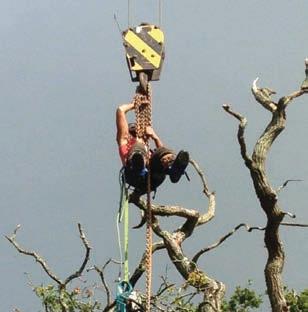
It is unusual for most tree surgery companies to employ qualified banksmen, since many crane drivers have little experience on trees. Subsequently for many climbers, their first few crane jobs are likely to be exceptionally nerve-wracking.
I was fortunate to be introduced to working with cranes aged 18, with an experienced climber and a veteran crane driver. They were able to babysit me through the process. But, because there are no formal programmes for this area, writing a training course for cranes is now proving challenging. So, let’s look at the main issues to be covered:
An immediate stumbling block with the two main training providers has been work positioning. Current industry guidance
I approached a respected instructor for input on this course, and we got onto the subject of cuts. Having never worked with cranes, he suggested double anchor points could be viable if step cuts could be incorporated.
This, unfortunately, is a nonstarter. I nearly killed myself 15 years ago with exactly that approach because I didn’t understand how little lateral force a crane could apply to a step cut.
When it eventually did snap the step, the top flew up 20ft in the air, snapped the wind monitoring cable on the crane, and then bounced back down towards me, stretching the chains and nearly crushing me.
It is a misunderstanding that a crane is able to rock a step cut to snap any holding fibres –a crane can only lift upwards or at minor angles
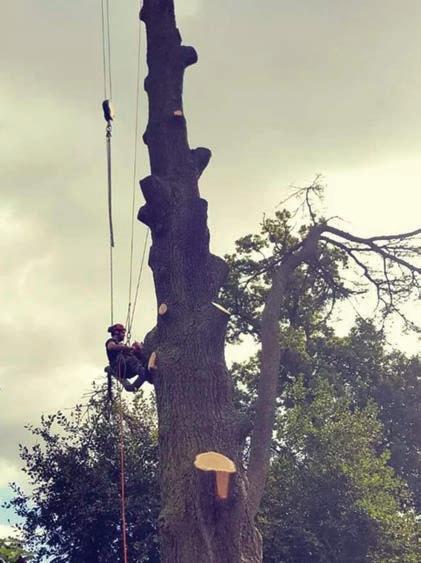
and the timber must be completely severed. I prefer a horizontal, straight through cut, even if Instagram is full of Americans showing ‘v’ notched cuts for crane picks. Ultimately, if the balance or slinging of any lift is incorrect, it is still likely to hit the climber, with or without a ‘v’ cut.
Issue 3: What a crane is capable of doing – and where to sling
The main mistakes I’ve made have resulted from incorrect slinging, overloading the crane and the driver applying too much pressure to a relatively light lift.

All personnel on the ground must understand these hand signals and be confident about communicating them to the driver
it is important all climbers understand the safe working load of the crane they are working with in order to make their best judgement
Slinging is more of an art than an exact science and lifting a canopy of a tree is radically different to lifting a consistent object, such as a steel girder, even if both weigh the same.
The slinging points are entirely dependent on the climber’s judgement and experience. In the case of some accidents, they have been placed too low. This means the centre of mass of the stem is too high and the canopy can turn turtle, potentially crushing the climber.
As a standard, I will sling at least two-thirds the height of where cutting from, to the top and will position the jib roughly one metre, biased in the direction that I want the lift to go in.
Overloading the crane is something that can be avoided. All cranes come with their own schematics and there are timber weight indexes to provide estimates for the climber.
And if a climber is proposing a one tonne lift for a crane with a lift capacity at that outreach of just 1.5t, they are unlikely to be aware they are actually overloading the crane. The other end of the spectrum is where an inexperienced driver may overestimate weight and apply 4,000 kg of force to a 1,000 kg lift, causing it to tear the wood fibres prematurely and shock load the crane. In this instance, slings or chains can be snapped – exceptionally hazardous.

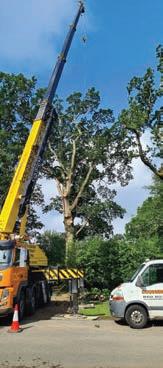
Spot the climber –one anchor point is being used, as to use two in this situation is impractical and dangerous
However, it is important all climbers understand the safe working load of the crane they are working with in order to make their best judgement. The driver will have a readout of what pressure being applied and the climber needs to be aware of that.
For example, the climber is cutting a top weighing approximately one tonne and the load block on the crane weighs 500kg. There is an approximate loss of lifting force in the system of 30% from cable weight and friction, so the crane needs to apply a force of around 2,140 kg to hold the piece and enable the lift to glide away smoothly. This is to avoid shock loading the crane or tearing the timber fibres during the cut.
I realised at exactly this point how badly I’d underpriced this dismantle; another firm had estimated 20 labour days on the site – whereas I had estimated three, plus a 50t crane
With all the above in mind, there are still significant hurdles to overcome when it comes to developing a training course for cranes. The plan for the course is to run it over two days, with one theory day and one practical day. We will train a maximum of eight candidates and we are working on finding a training body to officially accredit the programme – collaborations are welcome at this point. We are looking to market the course at less than £1,000 (incl. VAT). It will run as an invite-only course, with a review of candidates’ CVs and a telephone interview prior to inviting them to participate. Please get in touch for more information.
Matthew Rowden ProfDipArb ABC L6, NatDipArb BTEC L3 has over 20 years’ experience within arboriculture and runs Rowden’s Tree Consultancy and Training rowdentreeconsultants@gmail.com


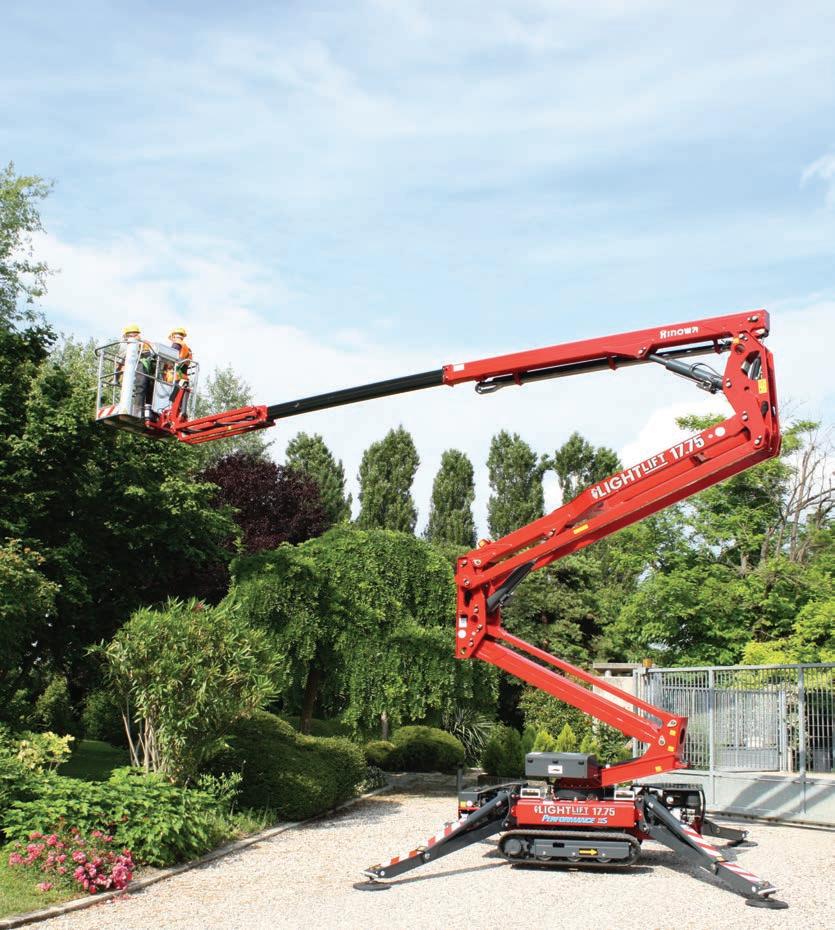

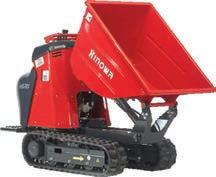

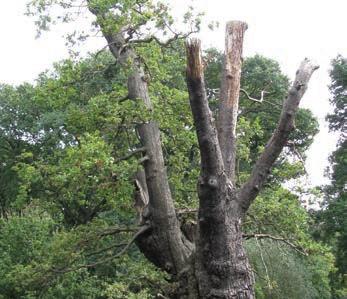
Tom Roser believes The Royal Parks has accelerated the work programme involving repeated and extreme pruning to trees in Richmond Park.
He has been monitoring the situation for a number of years and says too many trees have been damaged or died unnecessarily, including some which are veterans of up to 400 years old.
Back in 2021, Roser, who works as a tree officer, launched a petition to highlight his concerns. The petition calls for an independent investigation into the Royal Parks’ management of the trees and asks if there were more moderate ways to maintain them.
Now, in 2024, he is raising the matter again because he says even more trees are in a bad way because of the “ruthless pruning regime.”
Richmond Park covers 2,500 acres in south west London and is close to Roser’s home. He has known the park all his life and remembers going there with his grandparents. Because of his history with the park, he knows many of the
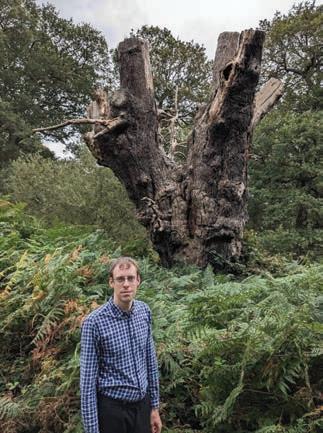
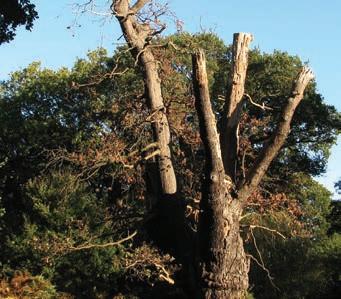
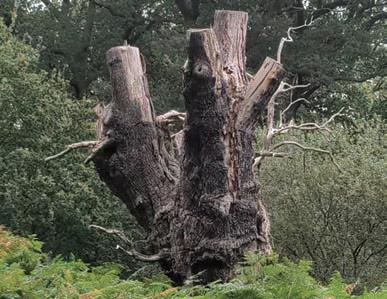
T0772: This tree has the estimated age of 400 years and was pruned repeatedly, even after it died

trees individually. He does not believe what has happened is the fault of the contractors, more that they were “simply following orders”.
He says he heard a number of years ago that work on Richmond Park’s trees were being ‘accelerated’ and he believes this was in part linked to reducing costs and to avoid being sued on health and safety grounds.
However, Roser feels the actual risk of anyone being injured by a falling branch was low and that the work was disproportionate.
“Extreme pruning was extended to ancient trees when alternative measures should have been used,” he says. He adds that recommendations from consultants – that a far more cautious and long term approach should be taken – was not followed. Roser says better methods that could have been employed include: fencing trees off, propping limbs, cable
bracing limbs and only pruning branches that are directly endangering high risk areas.
Roser notes some 345 trees have been felled in the last 10 years, and a further 31 trees have either severely deteriorated or died, he says, as a result of the pruning. “Too many have either been completely cut down or left as dead high stumps. The correct strategy would have been to follow the advice of consultants, allow trees to recover after gentler pruning and monitor over a longer time frame to see if their health improved. This has also led to a loss of habitat in a short time, which is irresponsible and disastrous for nature.”
While pruning can be necessary, Roser points out there can be dire consequences if it happens too hard and too fast. “The rule of thumb in the industry is that when a tree is pruned well, you should have difficulty noticing that work has been undertaken on the tree.
“There are instances where a heavy prune is the only way of retaining the tree. However, there must be significant defects to warrant the work. The wisdom on ancient trees is to prune a branch to see how the tree responds to pruning and then prune the rest of the tree depending on how much growth the tree puts on.”
“My concern is that pruning ancient trees for the purpose of them putting on a profusion of growth could make the tree vulnerable as the tree could put on more growth than it can sustain, thus the tree then suffering harm down the line,” he adds.
Over the years, Roser has logged details of many of the park’s veteran trees. This includes an oak, near Kingston Gate, which was tagged 0772 and from around the time of Elizabeth 1st.
“Google Street View in 2008 showed this tree was pruned so hard that, in my view, serious harm was inevitable. By 2016, three of the four limbs
Extreme pruning was extended to ancient trees when alternative measures should have been used
were dead, but despite this, the tree had been pruned yet again. You can see in a photo taken late summer 2018 that the tree is now dead.”
He says a far better option would have been to “cable brace and the limbs leaning towards the road given a minor prune. This would have kept the tree safe for many years to come. There cannot be many trees of this age in England and its death represents a real loss to our natural heritage.” Roser says he was asked not to speak to the Royal Parks’ tree professionals on different occasions and instead, only had a meeting with management, who he says did not have full understanding of tree care.
“They seemed more interested in avoiding the risk of litigation instead of preserving such venerable trees as you would expect with the site being Site of Special Scientific Interest, a European Special Area of Conservation, and a Site of Special Importance for Nature Conservation.”
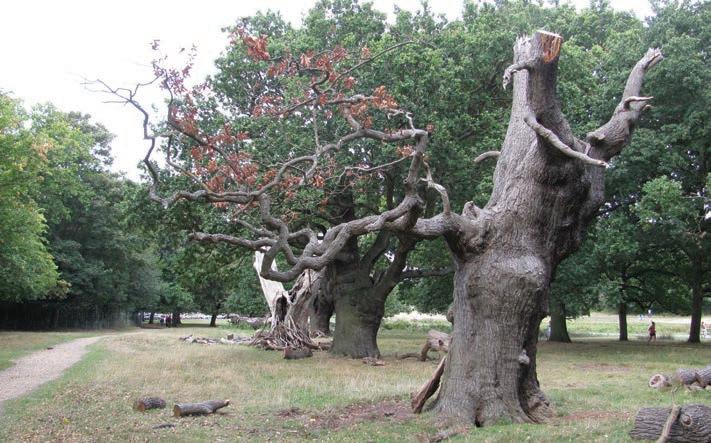
He adds the Royal Parks have said trees were felled because of disease but says details of what testing occurred have not been made available. In another example, he was told a felled tree had the fungus Collybia fusipes. Roser says he is uncertain about this as it is a rare fungus that is unlikely to lead to a tree collapsing. Others were said to have dieback in the crown but again, he says disease did not appear widespread or to present a hazard. “The Royal Parks have said that there is a disease called Acute Oak Decline affecting a number of their trees. According to the Forestry Commission this disease can kill a tree in a short period of time, but generally decline takes place over a long period. The recommendation of the Forestry Commission is to monitor the trees, as trees can recover from Acute Oak Decline.”
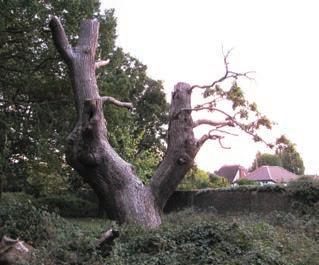
A Royal Parks spokesperson said: “The Royal Parks is aware that an arborist – Mr Tom Roser –has been circulating a document to local residents as well as establishing a petition and fundraising campaign relating to his opinions about how the trees are managed in Richmond Park. The Royal Parks strongly refute the conclusions that Mr Roser puts forward. The Royal Parks has answered all his points individually on more than one occasion, responded to a series of his
requests made under the Freedom of Information Act at significant expense to The Royal Parks Charity, and has met with Mr Roser to discuss his views. Regrettably, we could not agree with his views, and he has persisted with his campaign.
“Our management teams are dedicated and qualified professionals with decades of collective experience caring for the trees of Richmond Park. The Royal Parks is a member of both the Arboricultural Association and the London Tree Officers Association. Our actions consider the full health and structure of the tree and its surroundings, increasing visitor numbers and a risk management assessment. Decisions are also taken in the context of the increasing pressures from tree pests and diseases and the emerging impacts of more extreme and increasingly unpredictable climate conditions. The team use independent consultants and specialists to provide advice and verify decisions. We abide by all current British Standards for tree and specialist veteran tree management methodologies.”
Roser concludes: “I do not feel I received full responses from the Royal Parks – instead it feels as if my questions were brushed under the carpet. I thought long and hard about speaking out – and I do so in a personal capacity. I have been made to feel my campaign was vexatious. But the loss of trees is something I care about deeply and so I am standing up for them and I want others to know about what has happened.”
Roser is encouraging the readers to read the open letter which goes into detail about 31 trees he believes were pruned excessively and 345 trees which were felled or left as high stumps.
For more information: Tom’s petition: thepetitionsite. com/takeaction/237/560/791
Tom’s open letter: open-letter-to-royal-parks.co.uk
• Geoweb is the original Geocell co-invented in the 1970’s by Presto Geosystems.
• Geoweb TRP was the first Geocell used and approved for tree root protection applications in the world.
• Patented Atra Key connectors. Fastest, safest, most cost-effective connection mechanism.
• Project specific design available.
• Geoweb is available from 75mm to 300mm depth.
Greenfix are pleased to offer a CPD approved Guide to Tree Root Protection seminar which can either be hosted online or in person.
To book a CPD contact us on the details below.
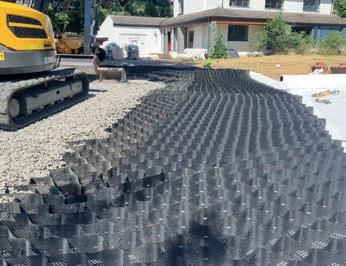
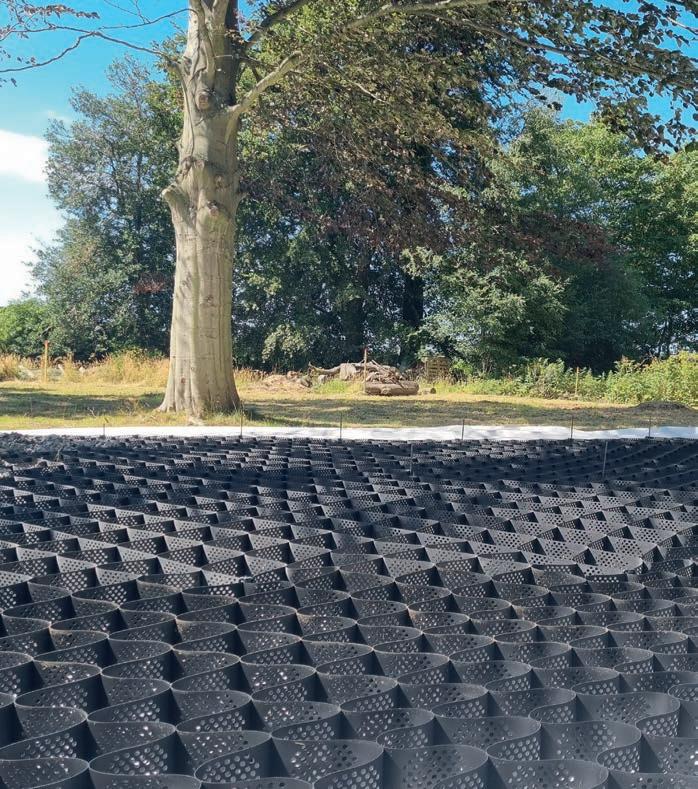


• Geoweb TRP 200mm deep system, New ECO Dwelling, Liff, Angus.
• Temporary use for demolition, construction traffic and 60 ton crane loadings.
• Fully designed the Greenfix engineering team.
• Clean free draining infill to allow percolation of water and maintain aeration.
• After the building work the Geoweb was recycled, and the stone infill re-used on other areas of the site.

Greenfix is the leading designer and supplier of soil stabilisation and erosion control systems in the UK.
WITH CONVENIENT COLLECTION AND PROVIDING THE OPTION OF AN ONGOING REVENUE STREAM, THIS COMPANY IS FIRST CHOICE FOR MANY ARBORISTS AROUND THE UK. PRO ARB FOUND OUT MORE FROM ARB PROCUREMENT MANAGER , MICHELLE BLIGNAULT

Alarge team from A.W. Jenkinson Forest Products was kept busy recently at the APF event at the Ragley Estate in Warwickshire, with a constant stream of arborists popping into the large marquee, which was frequently packed. This proved a hugely popular meeting point for customers old and new, who were sustained with constant refreshments and a hog roast.
“It was a fantastic opportunity for us to meet up with those who have dealt with us for many years as well as explain what we do to those who don’t know us, quite a bit of business comes to us through recommendation,” says Michelle, who heads up the arb procurement team.
With more arborists now using A.W. Jenkinson Forest Products, the arb
procurement has expanded and focuses on providing friendly and expert service, says Michelle. “We’ve all got good knowledge of the arb sector and perhaps surprisingly our team is all female, which is rather unusual in this market.”
Arborists certainly play a part in A.W. Jenkinson’s Forest Products ongoing success, as constant suppliers of wood
What we pay to arborists per tonne can vary, but prices have risen in recent years, particularly with rising demand for biomass
chips. The company’s marquee was shared with connected businesses including Pryor & Rickett Silviculture, Euroforest, Forest Gardens, and M&M Timber. The theme focused on the lifecycle of timber products, showcasing
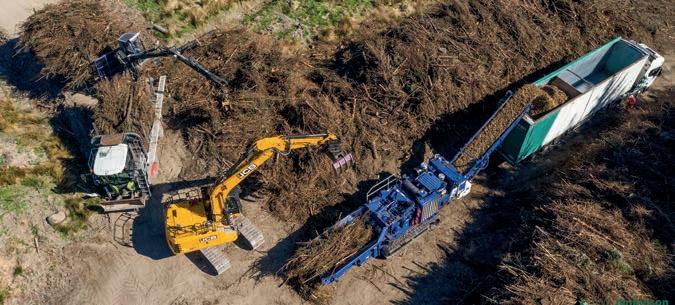
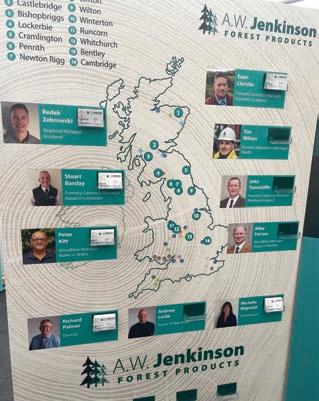
the journey from the early life of trees to harvesting, collection, and the use of finished products. These include biomass energy, agriculture, equestrian uses, building materials like MDF panels, and surfaces such as children’s playgrounds.
A.W. Jenkinson Forest Products also produces tree bark, popular in the horticulture sector.
Despite its vast expansion, A.W. Jenkinson Forest Products remains an independent company, headquartered in Cumbria, handling over 4 million tonnes of wood co-products a year. It operates nationwide, from the far north of Scotland to Cornwall.
Michelle adds: “What we pay arborists per tonne varies, particularly with rising demand for biomass. Arborists find this to be a valuable extra income and appreciate not having to deal with large amounts of
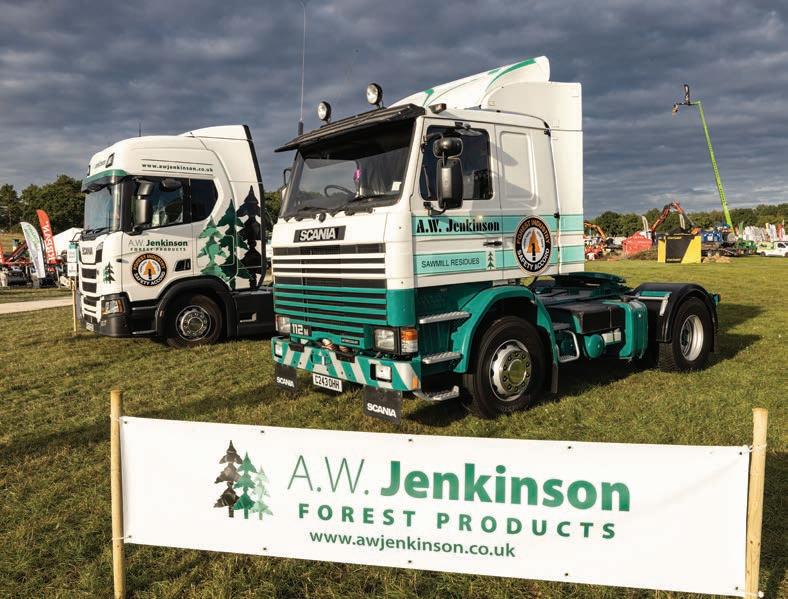
waste. We encourage them to contact us to find out the value of their wood chips.”
In some cases, arborists will take their chip in a tipper direct to A.W. Jenkinson Forest Products sites located around the country, or if sufficient quantities are held on site, direct collection is often easier. “Provided you have a yard for our trucks to access, direct collection is often possible – the minimum amount is 25 tonnes, though in some cases, we may be able to collect a minimum of 16 tonnes. Arborists
only need to store the wood chip; we handle the processing, such as making wood chip pellets at our Lockerbie, Scotland operation."
A.W. Jenkinson Forest Products is also highly experienced in handling waste from diseased trees. While ash remains the major species felled due to dieback, other trees such as larch and sweet chestnut are also removed when affected by pathogens. “We are used to dealing with wood chips from diseased trees and ensure responsible transport and treatment, preventing impact on healthy stock.”

A.W. Jenkinson Forest Products was formed in the 1960s in Clifton just outside Penrith. Since then, what was once a one-man band has become a diverse but cohesive group of businesses with wood at its heart.
A.W. Jenkinson’s services link forestry, sawmilling, wood processing, and the building and demolition sectors with the demands of pulp, paper and panel manufacture, energy generation, agriculture, horticulture and amenity markets in an environmentally responsible cycle that makes maximum use of one of the world’s dwindling resources. The group handles over four million tonnes of wood co-products each year, collected from forestry sites, sawmills and other wood processing industries throughout the UK.
Many arborists report that business is good at present. Some firms are involved with more substantial site clearance projects to facilitate new development and are finding their yards are piled high with wood chip by-product.
" There are still cases where some arborists are unsure about what to do with their waste, but
Today the A.W. Jenkinson Group includes a growing number of innovative businesses serving the needs of customers across the UK and northern Europe. It includes A.W. Jenkinson Transport, one of the UK’s largest providers of haulage, distribution and logistics services, with a growing fleet of almost 1000 vehicles trucks, as well as waste wood suppliers
A&A Recycling Ltd or even bovine genetics and breeding specialists
A.W. Jenkinson Farms.
wood chip is a product that can be used. If you've got sizeable amounts, then we are the people to speak to."
For more information: Email: arb@awjenkinson.co.uk
To find out site locations visit: awjenkinson.co.uk/sites
Ergo climbers
These climbers are designed with the focus on comfort. The ergonomic lightweight shank provides a more natural foot angle to prevent pressure points and fatigue so that feet don’t hurt at the end of the day.
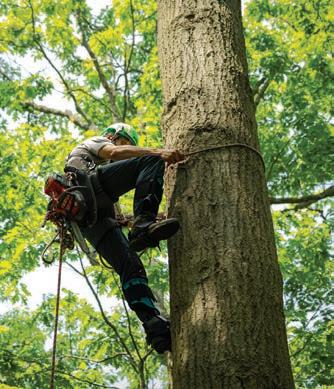

Key features:
The adjustable cuff allows the wearer to fit the foam pad on the correct spot on the leg to help disperse pressure and prevent pain in shins. The new dual buckle system offers improved stability and allows use with a wider variety of climbing boots.
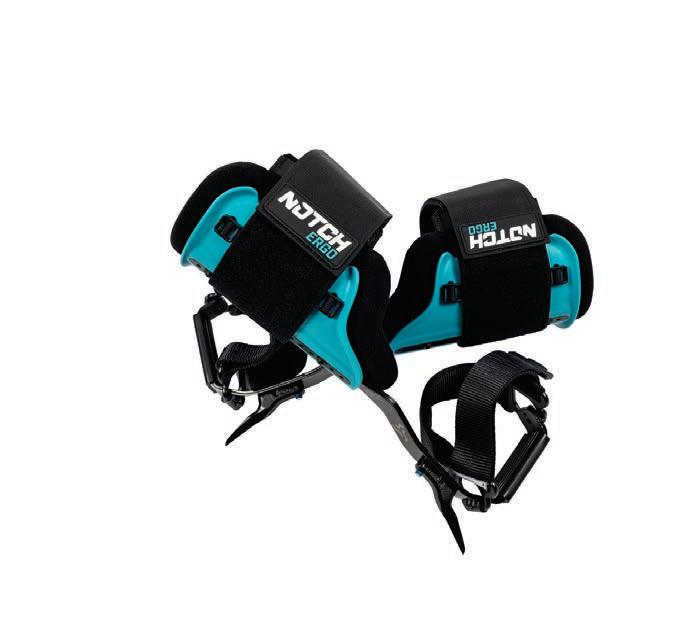
• Stirrup grip pad for increased grip and stability
• Scannable enabled for track and trace capability
• Dual foot strap assembly – makes it easy to fit to your boots –rear strap can be set and left for comfort and convenience
• Redesigned cuff better – disperses pressure, will not slip out of place, and reduces discomfort on the shins.
NOTCH EQUIPMENT (PART OF VERTICAL SUPPLY GROUP), THE US-BASED MANUFACTURER OF SPECIALIST ARB HIGH PERFORMANCE EQUIPMENT HAS LAUNCHED FIVE NEW PRODUCTS, WHICH ARE TESTED IN REAL LIFE BY PROFESSIONAL ARBORISTS
An upgrade to the Chester SRS Chest harness means this now features additional storage space, hydration pack integration – hydration reservoir not included – and daisy chain loops for customising to the climbing system. The Chester DLX has storage pockets to carry items such as a hydration pack or ice pack, a medical pack, knee ascender, comms device, phone, snacks, wedge, and more.

Key features:

• Seven centre daisy chain loops for attachment to the climbing system
• Shoulder daisy chain webbing for more attachment options
• Compatible with most 1.5L hydration reservoirs
• Left and right shoulder tunnel for hydration hose or knee ascender
• Suspender straps for harness connection included.





Key features:
Notch believes the Catalyst is the most comfortable harness on the market and has numerous advantages. The custom Eva moulded back and leg panels feature integrated ventilation channels for comfort and breathability. There are multiple adjustment points and custom flared side D-rings are easy and intuitive to clip into while the rope bridge has a patented ‘wearsafe’ ring for clipping into the climbing system.
Key features:
• Multiple adjustment points in the waist, rise and leg loops and help the wearer to get the perfect fit
• Scannable enabled for track and traceability
• Complies with CE, ASTM and ANSI standards.
A free-standing backpack with well-designed compartments to users get all your gear from the vehicle to the job site – it offers 70L of storage space in a square shape, making it convenient for travel. With a stand-up and stay-open design, the Hauler features convenient pockets, including an integrated helmet pocket that fits a Protos helmet with a shield. It also keeps the line setting equipment easily accessible with an external dedicated ‘pop box’ pocket. The Hauler can be taken to and from the job site with comfort and ease. The bag is made from 1680 denier weather-resistant shell fabric, which protects gear from the elements.
• Front external pocket with daisy chain webbing and mesh pocket
• Side slim storage pocket for personal items
• Sculpted shoulder straps and back panel
• Four gear handle for easy carrying and ID tag.


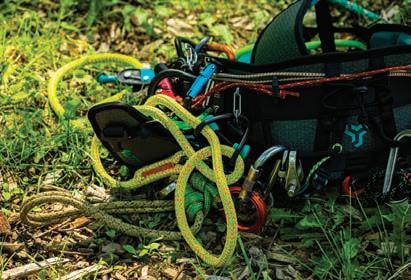
When an oval carabiner won’t deal with a job satisfactorily, this D-shaped carabiner offers a larger gate opening to accommodate a wider variety of applications. The carabiner has a 23mm gate opening for larger equipment compatibility and a 3,600lb gate strength for safety and reliability
Key features:
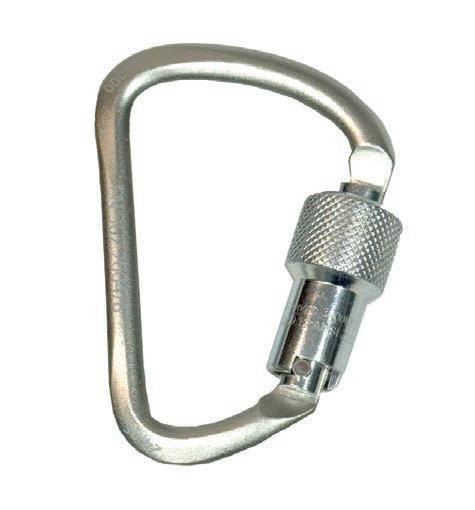
• Certified to CSA, Z359.12, EN362-2004/B
• Double-action twist lock (two-stage)
• 3,600lb gate strength
• Steel construction
• Weight: 330g/11.67oz.
FSI HAS LAUNCHED THE B31-980 TO MEET MARKET DEMAND FOR A HIGHER HORSEPOWER AND VERSATILE STUMP GRINDER

• The new model follows on from the FSI B31-749 stump grinder which had a 26.5hp engine combined with a compact, manoeuvrable design. FSI has now introduced the new, higher horsepower, FSI B31-980. FSI managing director, Kim Schmidt, says: “The market is constantly evolving, and we strive to always stay ahead of the curve. By actively listening to our customers, we can identify emerging trends and develop products that truly meet their needs.”
• FSI was the first manufacturer to introduce a pivot point design on pedestrian stump grinders, and continued innovation has seen features like the FSI power-clutch, safety bar and hill hold brake system.
• The new model retains the same narrow design (74cm), reliable performance, stability and manoeuvrability. However, the increase from a 26.5hp to 38hp engine, delivers the additional power users require to quickly and effectively tackle stumps and navigate challenging terrain.
• The compact build, combined with counter-rotating tracks and low centre of gravity, optimises manoeuvrability, making it ideal for a diverse range of working environments. When navigating tough terrain, or cutting on slopes, the built-in hydraulic motor brakes and counterbalance valve found on the B31 range ensure stability during intensive operations.
FSI B31-980 Stump grinder
• Efficiency is assured because of two hydraulic cylinders which enable it to cover 120cm in a single sweep, while the ergonomic operator panel offers a view of the working area and places all necessary controls at the operator’s fingertips.
• The hydraulically-driven cutter wheel eliminates the need for daily maintenance, minimising operating costs and reducing time spent in the workshop.
For more information, please visit: fsi-stumpcutters.co.uk








he arboriculture industry has undergone significant transformation over the last few years following guidance from the Health Safety Executive (HSE), which mandates a new approach to safety when working at height. The Work at Height regulations were introduced following an investigation from HSE, which deemed that industry professionals often weren’t compliant with regulations, resulting in an increase in injuries and fatalities associated with falls from height. One of the most significant changes for arborists and tree climbers since then has been the requirement to use two separate climbing systems at all times, which has received a mixed response.
Resistance to change
A large proportion of the industry haven’t welcomed the change, and admittedly, are not compliant with the new regulations, even after five years. Reasons for this vary, but the overall feeling is that people don’t like change or being told they need to change. For many
experienced climbers, who have successfully climbed for years with a single anchor point, the idea of needing two ropes feels slightly unnecessary. There’s been concern that the new system slows down jobs, requires more equipment and training, as well as more cost.
the adoption of tworope climbing systems could be a pivotal step towards elevating the professionalism of arboriculture
Whilst the industry response has been varied, having two separate anchor points instead of one is undoubtedly safer. The system offers better work positioning due to the separation of the direction of the climbing system, which aids a stable work position by allowing climbers to distribute their weight and equipment more evenly. Having two anchor points also prevents the risk of falls due to climbers accidentally cutting themselves out of the tree with their saw.
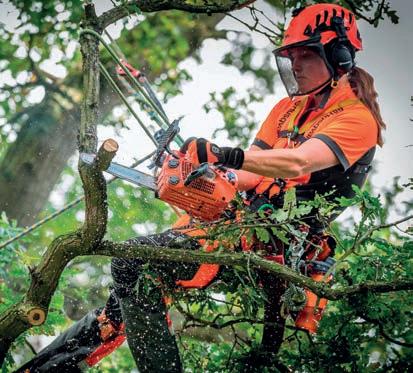
While all climbing equipment is rigorously tested and certified to meet industry standards, the one variable that remains unpredictable is the tree itself. A tree is a living organism and while we may make educated guesses about the strength of the timber, external factors such as decay or how we load the anchor in tension may increase the risk of failure. By having a second anchor, we effectively mitigate these unknowns as the load is shared between two points.
of climbing equipment
The equipment we use now is the same as what we used prior to the new regulations, but with the addition of an extra climbing system and anchor point. The anchor points can be installed close together so the two climbing lines run parallel, allowing professionals to operate them with one hand as they would do with one climbing system. To improve movement around the tree, the two anchor points can be separated or via redirects to triangulate between the two points, allowing arborists to work a larger area without the need to ascend back up the tree. When using one climbing system, climbers often put themselves at risk when installing redirects by installing their lanyard to a branch which may not be strong enough to carry their weight as they disconnect or slacken their main climbing system. Using two climbing systems means that if they need to disconnect or slacken one line to install a redirect, they are not putting themselves at risk as the second climbing system still holds their weight in the top anchor point.
The adoption of two-rope climbing systems could be a pivotal step towards elevating the professionalism of arboriculture. The industry often lags behind others, such as Rope Access, in terms of safety standards and professionalism. Given the high risks of tree climbing, wages and work conditions should better reflect the job's complexity. By showing a commitment to safety, arborists can position themselves as professionals with high standards, which will not only benefit workers but also build trust with clients and the public.
CREATED FOR PROFESSIONALS, EGO’S CSX5000 IS PROVING TO BE A SERIOUS CONTENDER FOR THOSE READY TO MAKE THE SWITCH TO AN ENVIRONMENTALLY FRIENDLY WAY OF WORKING
The CSX5000 is part of EGO’s Pro X range, which is aimed at professional users. The rear-handle model is well-balanced and offers a chain speed of 30m/s – it provides comparable performance to petrol saws, but with the benefits of battery power.

According to EGO, the CSX5000 can be used safely all day and Chris Buck, product manager, comments:
“The CSX5000 is the first in a new generation of rearhandle chainsaws designed for demanding work. With a 50cm full chisel chain for fast and efficient cutting, this all-round saw has the power and performance to support tree surgeons with the toughest of jobs.”
Display screen options
The CSX5000 has an LED display screen
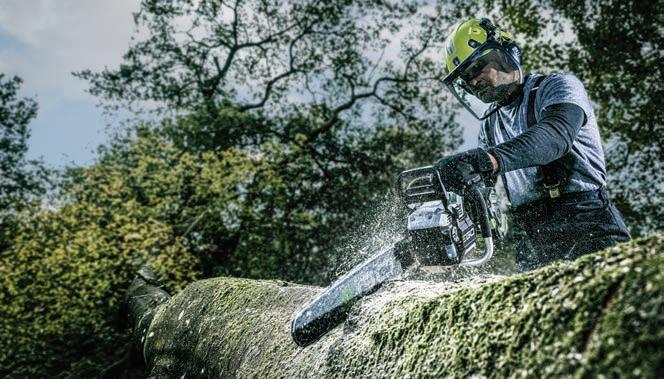
Power bank solution
The model uses the PGX battery charging solution, while the PGX1400PB power bank, with off-grid charging, enables operators to
The CSX5000 is a truly powerful and robust chainsaw, with zero emissions as well as far lower operating overheads and maintenance costs

carry enough energy to see them through to the end of a full day’s work and means there is no need to carry more batteries.
The CSX5000 has a centralised
battery position for optimal tool balance and weight distribution, and the handle positions also ensure comfort when both cross-cutting and felling.
Buck adds: “The most demanding ground saw applications require precision, power, and good ergonomics – the CSX5000 delivers all three. The CSX5000 is a truly powerful and robust chainsaw, with zero emissions as well as far lower operating overheads and maintenance costs, it offers a great return on investment.”
The chainsaw is suited for bar lengths of 40cm - 50cm and the chain’s metal bumper spikes ensure extra stability when cross-cutting and felling. An integrated felling line enhances safety by ensuring the user can see in which direction the tree or branches will fall.
For more information visit: egopowerplus.co.uk
LAUNCHED
Makita has its range of chainsaws with the launch of a number of new models – the UC022G, UC024G, UC025G, and UC026G 40VMax XGT rear-handle brushless chainsaws. The new launches are part of the XGT series and according to Makita, combine power, efficiency, and convenience for effortlessly tackling cutting tasks.
All the new models are built on Makita's 40VMax XGT platform to deliver robust performance and extended runtimes and each have been manufactured with the same body and motor design.
What are the variations?
The key differences between each model is with the choice of chain bar lengths that are available:
• UC022G at 350 mm
• UC024G at 300 mm
• UC025G at 350 mm
• UC026G at 400 mm
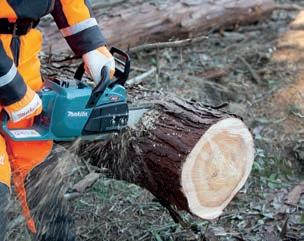
Furthermore, the UC022G does not require any tools for chain tensioning because of the easily operable handle for tool-less adjustment, while the UC024G, UC025G, and UC026G utilise captive bar nuts.

Equivalent to 35cc two-stroke petrol chainsaw The chainsaws are based around a high-powered brushless motor that generates 1.6kW of maximum output power, which is comparable to 35cc two-stroke petrol chainsaw. This speed allows the blade to cut through the thickest branches with chain speeds up to 25.5m/s.
Operators will also benefit from the improved trigger response rate that provides acceleration from ‘Trigger ON’ to full speed in under one second.
In addition, should the chain lock due to load, the tool is able to restart immediately upon removing the blade from the load, without the need to retrigger, making it possible to resume cutting operations straight away.
More benefits
Other additions to the range from Makita include:
• Highly visible felling line as well as an onboard automatic oiler with an adjustable flow rate
• Ergonomic soft grip that reduces vibration and fatigue during prolonged use
• Lightweight design – further improves
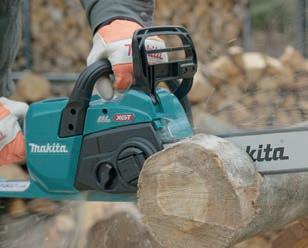
Operators will also benefit from the improved trigger response rate
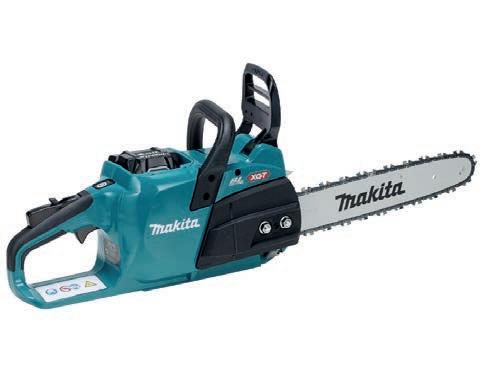
noise, and a brushless motor system that ensures you get all the power you need, when you need it while reducing the need for ongoing maintenance, the new XGT chainsaws are a fantastic addition to our powerful and expanding 40VMax XGT portfolio.”
For more information, visit makitauk.com


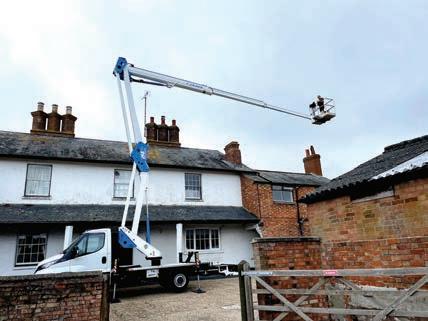
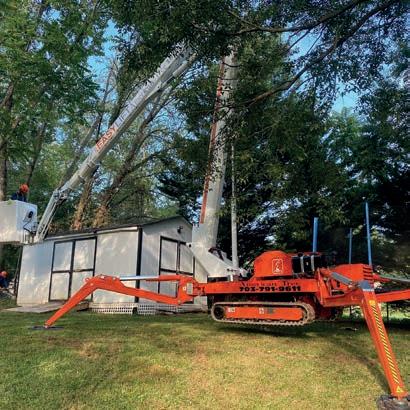
Greenfix is one of the leading designers and suppliers of tree root protection products, something which is essential for tree survival, health, and continued growth. Where there is soil compaction, typically caused by excessive traffic or loadings, space for air and water is reduced. This stops plant roots from obtaining nutrition, air and water. Compaction can also have a detrimental effect on not only the tree but any pavements and roads it is supporting.
Greenfix products tackle issues such as the above along with the range extending to erosion protection and slope stabilisation.
In the UK, a growing number of tree officers, arboricultural consultants and arborists, who offer all types of planning and implementation of tree protection and planting strategies, are working with Greenfix to ensure projects get the correct
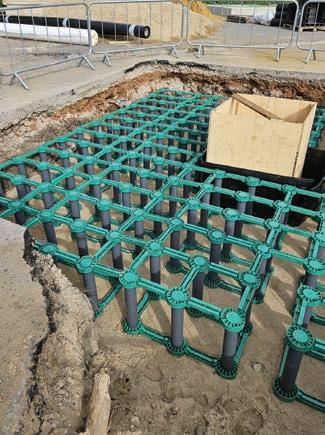
advice to ensure that trees remain healthy.
Special products manager

Roy Partington has worked for Greenfix for three years and has approaching 30 years of experience in this sector. He comments: “It’s great to be working with a market leader and innovator and with a vast amount of development going on, the business is growing massively – we supply a variety of customers from domestic users to those overseeing major landscaping and civil engineering projects.”
He adds that the impact of climate change, with prolonged spells of drought and intense wet weather also makes trees more vulnerable and contributes to problems such as subsidence and landslide – both of which Greenfix products can help address. They can also be used to help manage floodplains.
Greenfix is headquartered in Evesham, Worcestershire, from where it distributes a wide range of root protection products, including its Geoweb® innovation. Others include weed control blankets, barriers to deter burrowing animals such as badgers and rabbits, porous paving and materials to curtail silt, as well as those to support mulching and facilitate aeration and irrigation.
Their core product, Geoweb, was invented in the 1970s by Presto Geosystems in the US and is the original cellular confinement system, also known as geocell. It is certified by BSI to ISO 9001:2015 and is also CE-marked.
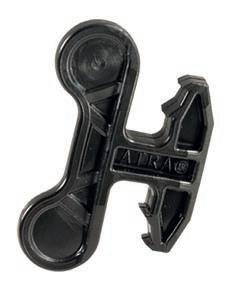
The product can be used for a variety of applications including load support and tree root protection, slope stabilisation and earth retention.
Since the invention of Geoweb geocells the product has continually been developed, to improve the product and its ease of installation. One such innovation is the Atra Key. It is used to join panels together and is seven times faster than other systems jointing systems such as staples and staplers. The Atra Key is also much safer to install for the operators and provides a proven tested mechanical joint.
As Partington says: “The Geoweb TRP system is a highly effective solution for building drives,
roads, working platforms, footpaths etc in the RPA’s of existing trees. Geoweb TRP distributes vertical loads laterally across the interconnected cells thereby reducing subsoil compaction. The system also prevents roots from breaking through the pavings placed above the Geoweb TRP. Where possible a porous surface system such as block paving, asphalt, Park Pave grass and gravel pavers, loose or resin-bound gravel should be used. Virtually any paving system can be used above the Geoweb TRP.
Geoweb TRP is the ideal solution for ensuring the protection and longevity of our very important existing tree stock
As tree roots can often be found within the top 600mm of soil, Geoweb TRP is the ideal solution for ensuring the protection and longevity of our very important existing tree stock. However, all sites are individual and Greenfix provides site-specific design, CAD drawings and installation method statements.
Geoweb complies with BS5837:2012 (trees in relation to design, demolition and construction) and is recommended for use
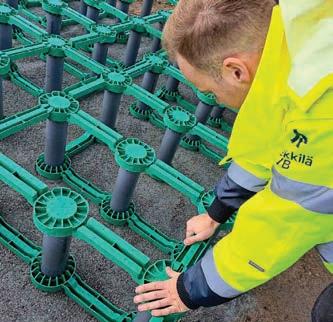
in APN12 (the use of geocellular confinement systems near trees). Further, TreeBunker™ from Greenfix is a product for new tree planting in urban landscapes.
It is a high-strength planting structure designed to sustain trees in pits and is the strongest model available in the market, with
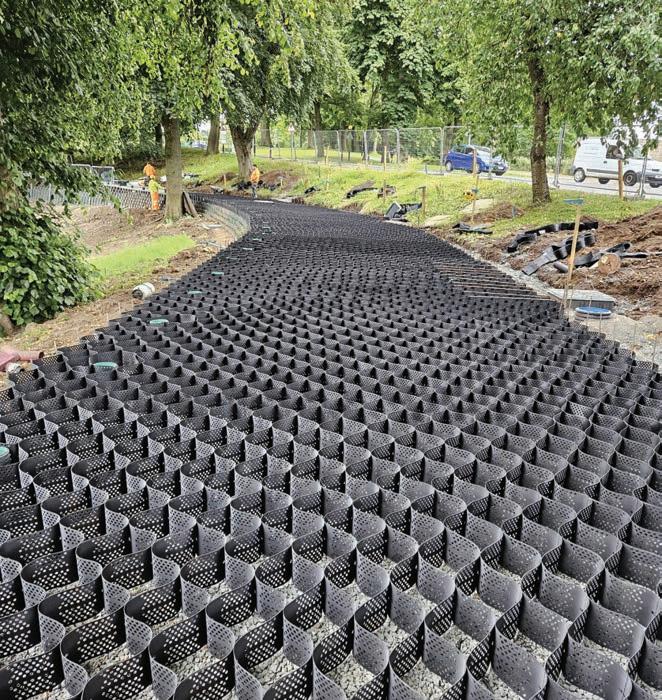
a point load resistance of up to 700kN/m2 Young trees are supported in uncompacted volumes of soil and it allows growth up to and beyond maturing, while also providing effective stormwater management. In addition, it allows water storage, which is helpful in dry periods – every year the tree grows, the water storage capacity grows too and it requires no maintenance. Partington says: “It’s extremely disappointing when trees planted in hard landscaped areas die or fail to thrive because the long term tree health and growth has not been considered."
TreeBunker ensures pavements stay intact and the new tree has sufficient soil volumes, and access to water and air giving it the best chance to mature and provide the significant benefits that trees bring to our towns and cities.
Partington explains that guidance on the use of Greenfix’s products is always available. We generally visit as many projects as we can but we have a great team on hand to provide comprehensive advice, including details
on how our products can be integrated into designs, their installation and much more. Notably, Partington was instrumental in the work to advise on the use of cellular confinement near trees, which is now part of guidance from the Arboricultural Association BS5837 – Trees in Relation to Design, Demolition and Construction. He has also worked with the Trees and Design Action Group (TDAG), on urban planting and best practice guidance, in addition to speaking at colleges and conferences.
The need to protect and plant trees is now a core part of many development projects, requiring experts to advise on habitats, legal removal, and site integration. As Partington concludes: “Planting is becoming more important for those in the tree care sector and we have products for wide range of environments.”
greenfix.co.uk
The purpose of tree tags is for tree owners to be able to identify their tree stock data effectively and efficiently, allowing for easy identification, tree control and maintenance management. There are various tree identification systems available, depending on requirements:
Aluminium tree tags
Aluminium tree tags are simple and economical, requiring no specific tools, and can be purchased in small or large quantities. However, they can become embedded into tree bark over time and the tagging process is labour intensive. They each have a four-digit number, can be attached to the tree with small nails, and are packaged sequentially in packs of 100 or 1,000.
As an exceptionally cost-effective solution for low volume tree tagging, they work well for companies with occasional requirements.
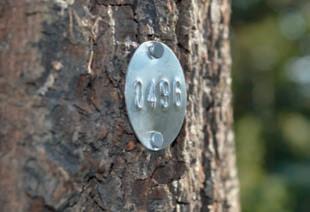
Latschbacher tree tags
The Latschbacher ARBOtag system is a great solution for situations where the tagging needs to remain highly visible for years to come, or where a volume of trees need marking. The required equipment is:
• A set of Arbo tags (numerically ordered packs of 200 or 1,000), complete with nails;
• Arbotag hammer with magnetic nail seat;
• Arbotag magazine with nail bag and storage case.
This system is an efficient and effective long-term solution. ArboTags are specially designed to ‘grow with the tree’ and the lifespan is hugely increased in comparison to other tags. The single nail causes minimal invasion to the tree, and thanks to the star shaped cutout, the tag will travel outwards along the nail as the tree grows.
TREE TAGS ARE AN EFFECTIVE WAY OF IDENTIFICATION AND DIFFERENT OPTIONS ARE AVAILABLE DEPENDENT ON THE TYPE OF JOB REQUIRED AS LANDMARK TRADING EXPLAINS
The magnetic nail seat in the hammer clings to the nail, and the hammer head is inserted into the magazine to automatically load the next numerically numbered tag, which is then neatly installed in the tree with one blow. High contrast laser engraving ensures outstanding durability. The tags are made from durable plastic, and don’t attract theft by squirrels. A company name or logo can be printed onto the tag for personalisation if required.
The Latschbacher Timber Tagging system is used for the identification of felled timber: tags are attached by plastic lugs on the back of the tag. This tag is supplied in two variations –curved lug tags, or long lug tags. Curved lug tags should be used for end grain timber; long lug tags are for fixing into bark. It requires:
• A set of tags, available in packs of 1,000;
• Signumat hammer for use with plastic tags;
• A spring-loaded storage magazine for storing the tags numerically.
Latschbacher timber tags are made from very tough plastic with strong integrated lugs, so there is no need for nails. This system saves on time, allowing for excellent
efficiency and cost effectiveness. It can be fully personalised. The integral lugs on the tag attach securely to the timber and the tag cannot easily be removed.
Latschbacher’s galvanised tags are generally used for labelling posts or poles. The galvanised tags are dispensed from the magazine in numerical order, and are used with a magnetic hammer which clings to the tag and then attaches it to the timber using the inbuilt prongs on the back of the tag. The embossed numbers are not subject to fading. Available in a selection of standard numbering sequences, 00011000, there are also limited customisation options available.
Please visit landmarktrading.com for more information.
For further details, visit: landmarktrading.com
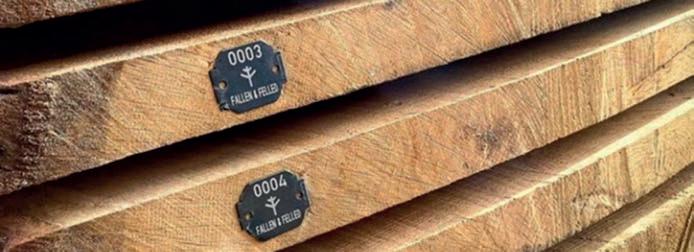
Vermeer’s range of equipment was centre stage at this year’s APF with many models on display and being demonstrated by the head office team. The company is well known for the quality of its wood chippers, that are built to last. With many arborists taking on bigger work projects, there is growing demand for a wood chipper that is trusted to perform along with excellent service and finance options.
Earning their reputation
The chippers are easy to operate, highly efficient and designed to promote operator safety. They have been designed at Vermeer’s headquarters in Iowa, USA, and manufactured for the European market in the Netherlands.
One of the key talking points at the APF was the BC200 57hp 8” model, which is currently available as a petrol model and now will also be available as a diesel from January 2025. This will provide users with the option of even more torque.
This is a chipper which is designed for European tree care professionals, and it includes two-step start, with an infeed button and switch control allowing for ease of operation, while an offset roller makes it efficient to feed the machine. It is able to chip branched material of up to 20.3cm (8 inches).
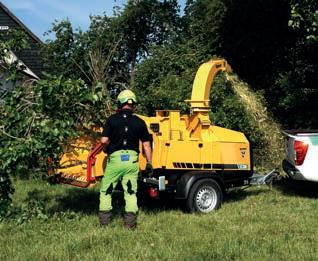
It has a SmartFeed system to monitor engine speed and stops or reverses the rollers if needed. The Stage V-complaint engine from Kubota delivers 57hp and best in class fuel capacity, while meeting emission standards. The Ecoldle engine control system optimises fuel efficiency and minimises noise.
The chipper is also easily serviced as a one-piece pivoting engine hood and ensures fast and simple accessibility to internal components, with parts within easy
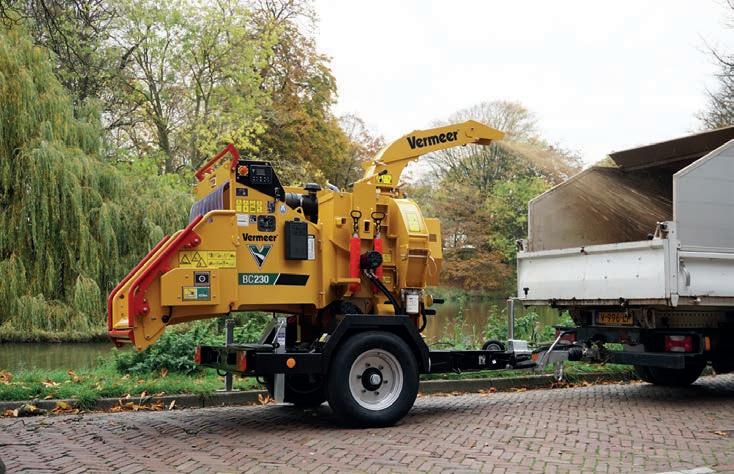
VERMEER ’S APPEARANCE AT THE RECENT APF EVENT SHOWED IT TO BE THE RANGE OF CHOICE FOR UK ARBORISTS WHO REQUIRE A WOOD CHIPPER WITH POWER AND RELIABILITY
reach. The BC200 is also available with a turntable, meaning it can be fed from the kerbside, thereby further increasing safety and improving productivity.
Turbocharged and ready to go
The BC230XL turntable wood chipper combines a 74hp CAT turbocharged diesel engine with a 9” x 14” infeed opening to provide powerful performance when dealing with heavily branched material. The twin horizontal feed rollers with offset 15.7” diameter upper roller allow large short lengths to be fed effortlessly while reducing the workload for operators. Dual springs create 303 kg (666.6 lb) crushing force between horizontal feed rollers.
The SmartFeed system, in combination with twin hydraulic motors, pulls in and processes difficult material, reducing preparation time. Helping improve safety along roadsides, the 180-degree rotating upper structure allows the operator to place the infeed toward the material, and can also help reduce operational cost due to the high fuel efficiency of the Caterpillar engine combined with the ease of access to all the relevant service points.
Bring on the heavyweight
The heavy-duty Vermeer BC1000XL wood chipper has an all-steel engine enclosure and is designed to cope with consistently high levels of work over long hours. It is equipped with a CAT C2.2 Tier V 74-hp (55.4 kW) engine that meets all the latest emission regulations. It is also easily transportable, because of its rubber-torsion suspension. The model features a 25-gallon fuel tank and

drum Infeed technology, along with patented bottom Feed stop bar and SmartFeed, with Infeed auto reverse. Contact the Vermeer team to find out more.
WITH THE ARRIVAL OF COLDER AND WETTER WEATHER, PERFORMANCE MATTERS EVEN MORE –REUBEN WILSON, STIHL GB’S MARKETING AND PRODUCT EXECUTIVE, EXPLAINS WHY THIS TOOL ENSURES MINIMAL DOWNTIME – PLUS CHECK OUT THE NEW KOMBIMOTOR
Reliability is key for tools used by arborists and forestry professionals and in the most challenging environments, professionals want the assurance that their tools are in top condition to carry out arduous tasks.
This is particularly important in the UK, where cold and wet weather can create additional challenges. As such, as we move into the wettest months of the year, professionals need access to battery-operated equipment that can maintain the highest levels of performance.

be exposed to water from both splashing and spraying without becoming damaged or broken. Put more simply, equipment with this rating can be used in wet conditions.
All Stihl batteries in the AS and AP System have IPX4 certification, allowing professionals to feel confident these tools will remain both functional and safe in a multitude of

Stihl has launched the KMA 200 R, its most powerful batterypowered KombiMotor to date. It offers greater power than even the largest petrol KombiEngine, with the new AP system KMA 200 R ensuring versatility.
The International Electrotechnical Commission created Ingress Protection, (IP) ratings to grade electronics based on their resistance to the intrusion of substances, such as dust or liquids, that can affect their ability to function as they should. IPX4, in particular, is recognised globally as a water resistance rating. An item listed as IPX4 certified is protected from water splashing from all directions, which means it can

To achieve IPX4 certification, a piece of equipment must be tested to the set standard. Here, the object, in this case a tool with the battery inside, is exposed to water for 10 minutes or longer and during this period the tool is sprayed from all the device is inspected for signs of intrusion including discolouration, deformation, and any other physical changes due to water ingress.
To ensure they meet the IPX4 standard, Stihl experts undertake extensive testing of its products at Stihl’s Research and Development facilities. So, while we always recommend storing batteries in a safe, dry space and avoiding submersion in water, they will fare well in wet weather.
As professionals continue to look to batteryoperated tools to support sustainability and productivity efforts, it is important that batteries offer excellent quality and elite specifications. Because our AS and AP System batteries are IPX4 certified, operators can depend on their tools to perform in the most challenging weather conditions.
For more information visit: stihl.co.uk
Stihl KombiMotors are compatible with 10 attachments, including a brushcutter, pole pruner, sweeper brush, blower, edgers, and hedge trimmers. With a maximum power output of 1.5kW, the KMA 200 R has 50% greater power compared to the KMA 135 R and 7% higher power than the petrol KM 131, meaning work can be completed faster and more effectively.
The optimised controls of the KMA 200 R allows users to cycle between three-speed settings and match the RPM to the task, and maximise battery working time. An adjustable loop handle can be moved easily along the shaft for greater comfort while working, and the harness attachment point can also be adjusted for balance.
For brushcutting applications, the KMA 200 R must be used with the new FSS-KM attachment. The FSS-KM features a wider 45cm cutting diameter, to cut with greater speed and efficiency.
KombiMotor is compatible with Stihl’s Smart Connector 2 A to collect operating information via Bluetooth.

Norwegian manufacturer Paxster has launched the eCompact Air –the model is now available in the UK and is being distributed by Boss Off-Road Vehicles.
Paxster is a leading provider of compact electric models, with a decade long commitment to the market, which was first gained in producing small, efficient vehicles used for delivering post and parcels to thousands of homes.
The eCompact Air introduces “a bolder, more robust design”, according to CEO Aleksander Safvenbom. He comments: “We understand that design matters, whether the vehicle is for work or personal use. That’s why we’ve crafted a stylish design without compromising the versatility and high-quality features.”
He adds there is now an alternative to fossil-fuel powered quads, which can be oversized and excessively powerful.
According to Paxster, the lithium iron phosphate batteries used are among the best on the market, offering extended lifespan and enhanced safety.
Meanwhile, the eCompact Air allows quiet working with its electric vehicle’s silent drive. It offers a maximum power of 7.48kW from battery type LiFePo4 combined with a 2x4
RWD drivetrain featuring enhanced traction. The manufacturer says the model provides “a crisp, responsive feel with a snappy performance that’s smooth yet energetic and perfect for everyday driving and task completion.”
There is a fully adjustable seat, side support, and it’s built to withstand rough use in all-weather conditions. With no barriers to negotiate, access is easy, and the ergonomic handlebars feature minimal switches – there are optional heated grips.
• Electric power
• Up to 240kg payload
• Maximum range of 69 miles
• Top speed of 37mph
• Road legal
with a cargo bed, front trunk and lockable side pockets.
According to Boss Off-Road Vehicles managing director, Phil Everett: “They’re tough little vehicles suited to work anywhere from arboriculture, horticulture, groundscare, construction and equestrian to agriculture, estates and leisure.”

• Optional built-in power supply for tools and equipment
• Optional heated grips
• Optional Gripmax MudRage tyres
• Ergonomically designed for comfort
• Geofencing capabilities
• Easy to use
• Paxster Connect – provides tips and alerts directly on a mobile
The eCompact Air is approved for road use and has LED front lights for optimal illumination. There’s plenty of storage area
At the worksite, the eCompact Air can be used to power tools and equipment, delivering up to 3000 watts of onboard electricity. Hitch systems front and rear allow for a variety of attachments and there is a wide range of accessories available. Paxster vehicles come with a three-year commercial warranty and a five-year battery warranty. From its base in Sarpsborg, Paxster distributes vehicles across Europe, with a presence in 20 countries and ambitious plans for further expansion.
The Paxster Utility lineup includes the eCompact, with a payload of up to 240kg and a range of up 69 miles. The eStretch is an extended model with a 400kg payload, 50mile range, and a load area twice the size of its counterpart. The vehicles offer numerous customisation options. Multi-mounts front and back, and additional equipment such as snow ploughs, leaf collectors, trailers, and harrows can be easily attached.
bossorv.co.uk

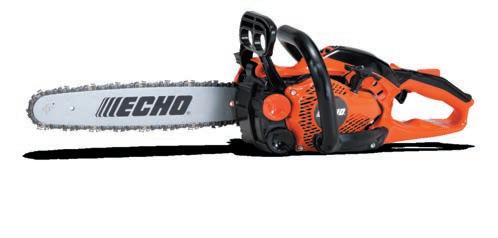


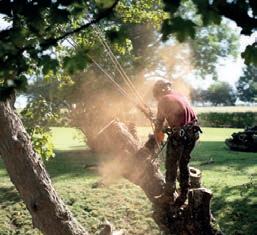
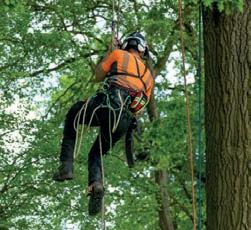

NEW GUIDE ON PRACTICAL RISK MANAGEMENT
The National Tree Safety Group (NTSG) has launched the second edition of its Common Sense Risk Management of Trees guide, to update the first, which came out in 2011. This guide took over three years to produce and provides extensive detail on the law around tree safety as well as best practice on risk management.
An expert drafting group oversaw the project, with representatives from the Arboricultural Association, Treework Environmental Practice, The London Tree Officers Association, Forest Research and Forestry Commission.
The NTSG was founded in 2007 and brings together a group of organisations with a shared interest in tree safety. It was formed in response to growing concern about the unnecessary removal of trees from streets and landscapes, and aims to develop a nationally recognised approach to proportionate tree risk management.
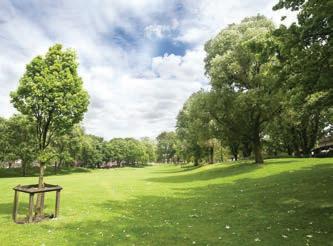
The group said the new guide reflects changing circumstances, which include the emergence of widespread tree disease, growing public activism and advocacy around the benefits of trees as now reflected in Government policy, and a number of new legal cases. The guide points out: “As natural organisms, trees organically change from year to year. While tree diseases are not new, emerging pests and diseases have moved
from being isolated problems to impacting a large percentage of the nation’s stock of trees.”
Much of the content is focused on the law and how this relates to trees and how those with responsibility – typically landowners - need to evaluate what is reasonable in terms of risk management and weighing this up against the benefits of trees.
The guide provides five key principles for consideration when managing tree safety in the public interest:
1. Trees provide a wide variety of benefits to society
2. Trees are living organisms, and they naturally lose branches or fall
3. The overall risk to public safety is extremely low
4. Tree owners have a legal duty of care
5. Tree owners should take a balanced and proportionate approach to tree risk management.
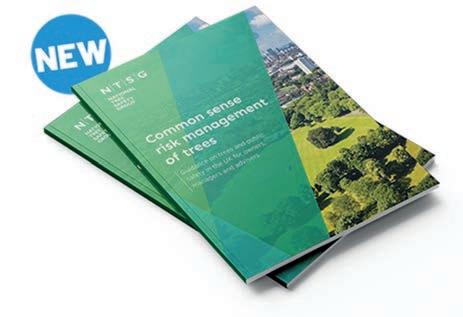
is compared to footballs (262,000), children’s swings (10,900) and even wheelie bins (2,200).
Even so, forestry, woodland management and arboricultural tree work are clearly hazardous occupations and need appropriate levels of assessment and risk control.
Outside of working with trees, risk comes from trees or branches falling on members of the public due, for example, to diseased trees or storm damage. There are also individual trees that may present a high risk of harm in high occupancy areas. Guidance centres on a number of methods to manage such risks, including:
Balance is at the heart of good risk management and the guide says: “Trees and woodlands provide an enormous range of social, economic and environmental benefits across the broad spectrum of urban and rural landscapes in the UK. Plans to sustain and maximise these benefits to enable us to tackle the climate emergency and biodiversity loss we are facing are outlined in the UK Government’s 25 Year Environment Plan and in the nation’s forest and tree strategies.”
Trees are predominantly low risk
Research by the Centre for Decision Analysis and Risk Management (DARM), commissioned by the group, shows the overall risk to the public from falling trees has been extremely low. The risk of being killed by a falling tree in any given year, during the period of 1997 to 2022, was one in 15 million per year. There were only about 55
• Zoning Typically, there are two zones used – high and low. High-use zones are areas used by many people every day, such as busy roads, railways and other well-used routes, car parks and children’s playgrounds or where property may be affected. Low-use zones are used infrequently and may only require irregular inspection, if any.
• Assessing defects The NTSG’s definition of a defect is ‘a condition or feature that would predispose a tree, or part of a tree, to structural failure’. Structural defects pose risks only where there is a likelihood of harm – so a large tree that is compromised or actively failing over a well-used road.
• Inspections These are not always required, other than when dealing with high-risk trees. In cases where there are recently planted and other small trees, or large trees that are not within falling distance of targets, no action is usually needed.
Meanwhile the risk of death or serious injury from trees in infrequently used areas would also not require checks. Trees in well-used natural woodland or woodland surrounding housing or a public park may only warrant an informal or non-onerous prioritised system of assessment to identify trees needing closer inspection.Trees with structural faults but valued for their habitat or amenity interests in frequently used areas may require specific assessment and management.
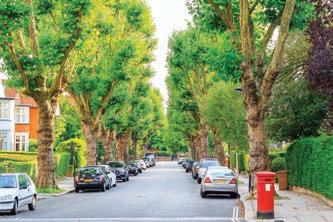
Producing a strategy can demonstrate the landowner has fulfilled their duty of care. Beyond this, keeping records including maps, provide the basis for safety management reviews and, in the rare event of an accident, can be important proof of reasonable tree management. It is not necessary to record every tree inspected; however, records presenting a serious risk and requiring treatment are useful. Other useful ways of demonstrating reasonable assessment and management of trees include recording recommendations for work and records of when tree work has been carried out. Negative recording describes the inspection procedure for recording only those trees with hazards identified to be of safety concern, typically following walk-over and drive-by assessments.
The guidance states there can be advantages in using those with “practical experience and knowledge, applied to real circumstances” in terms of managing risk. It points out, “when the process is abstracted from real circumstances the judgement may be influenced by trivial risks and an over-reliance on formulaic approaches and organisational complacency.” Those who do not necessarily have specific tree-related qualifications, but who have received basic training in tree inspection and possess a general knowledge of trees can play an important role.
Competence should include the ability to recognise normal and abnormal appearance and growth for the tree species and locality. This may include an ability to recognise visible signs of serious ill health or significant structural problems, such as substantial fractured branches or a rocking root plate, which, were they to cause tree failure, could result in serious harm. They should also be able to assess approximate tree height and falling distance from the tree to the area of use, as well know when to request further specialist advice.
Riskier locations include highways, footways, public footpaths, bridleways, railways and canals and semi-public spaces such as churchyards and school grounds. On private land, visitors and employees can also be expected to come within the reach of trees, as may trespassers. The greatest risk to public safety has proven to be from trees within falling distance of where people move at speed in vehicles. On average, over the past two decades, four people a year have died from roadside trees falling onto vehicles or from collisions with fallen trees. High winds also increase risk.
Tree owners are not expected to guarantee any tree is safe. They have only to take reasonable care such as could be expected of the reasonable and prudent landowner. Further, the guidance says, “a disproportionate response to the actual risks posed by trees leads to unnecessary intervention, particularly alongside roads and public places,” and this diminishes the benefits for both the public and the landscape.
There are times when a professional is needed although the duty holder should decide if and how to implement recommendations.
Inspections can be informal, and these include reports of problems by staff or members of the public – these should be acted on by following up with a formal procedure. Formal procedures involve scheduled and recorded assessment - detailed inspections can involve extensive work.
Walk-over assessments are a standard method for checking trees from accessible viewpoints to identify the need for further
inspection or management, whereas drive-bys are carried out from a slow-moving vehicle to check trees alongside roads.
More technical areas include soil and root condition assessments; aerial inspections of upper trunk and crown; or other procedures to evaluate the nature of suspected decay and structural defects, including using specialist diagnostic tools.
Detailed inspections are reserved for trees valued for their heritage amenity or habitat and pose a high level of risk. Special trees are those of high value because of their heritage or amenity value, including ancient and veteran trees. For trees with recognised high value and identified defects, restricting access may be necessary, including temporary exclusion. Foot traffic in wet conditions can also compact soil, damaging roots and increasing the risk of failure.
Ways to reduce access include:
• Deterring informal parking beneath trees
• Relocating facilities such as play equipment, seats, picnic tables, barbecues, information boards, commemorative plaques, hides, fishing platforms, horse jumps and feeding centres
• Rerouting paths and tracks
• Redesigning mown paths in areas of long grass is a proven method of directing people away from high-risk zones
• Placing structures and assembly points beyond the falling range of trees.
• Planting brambles and thorny shrubs.
• Using logs or piles of deadwood
• Allowing grass to grow uncut beneath the tree’s crown
• Leaving brushwood around the tree
• Erecting a warning sign, including temporary exclusion in adverse weather conditions
• Changing the area’s use such as for hay meadow and for grazing.
As this guide emphasises, risks to the public are generally low, but awareness of safety matters – the group’s work in this area will do much to educate all who own and work with trees.
Find out more and download the full guide or summary at ntsgroup.org.uk
JUST BECAUSE A ROLE IS NOT DESCRIBED AS PERMANENT IS NOT ALWAYS A REASON TO RULE IT OUT – BECCY BLACKMAN , DIRECTOR WITH CTC RECRUITMENT , EXPLAINS WHY IT COULD STILL BE THE RIGHT JOB
Have you ever considered taking a job which appears to have everything you are looking for?
So, it’s the right role – money and location with the experience your CV is crying out for – but you have been put off because it’s a ‘temporary’ contract?
In our series on career options for arborists, we thought it was worth spending some time explaining the benefits of the temporary role and how pivotal it can be for providing a bridge to the next stage in your career.
Why do employers use temporary contracts and how do they work?
Firstly, they enable employers to fill short term positions, generally when they are experiencing periods of increased business or have a hard-to-fill post that needs covering, while a recruitment process is exercised. In the arboricultural industry, they are most commonly used by local authorities and typical
examples would be if the arb department has a backlog of tree surveys to clear.
Alternatively, it could be that some shortterm funding for a tree planting project has become available or a search is on for a senior arb officer and this is proving difficult to source. In this case, a temporary filler is needed as the department is struggling to cope with the existing workload.
Climbing arborists are also sourced in this way as it is increasingly difficult to find workers who want full-time permanent work, so recruitment agencies are used in the interim.
What is probably not so well known to those in the private sector is that hiring machinery in a local authority is slow and procedural and it can take three to six
months to complete, making a short term solution necessary.
How does a temporary contract work?
A temporary contract of employment is much the same as a regular employment contract in that it contains the same information such as employer expectations, renumeration information, sick pay and holiday entitlement. However, where it differs is that it’s flexible in terms of the duration of the assignment.
Also, the ‘employer’ referred to in the contract will be the recruitment business that has sourced you for the role. The contract will initially be for around three months, but can be extended as the thirdparty end client requires and therefore be on-going. It’s often easier for a local authority to repeatedly extend a contract than to get the authorisation for a permanent post. But, by taking a temporary
role, workers can end up with a great placement, where they become invaluable and which ultimately results in a permanent job. The worker is paid by the hour and receives their salary weekly in arrears after completing a timesheet at the end of each week, confirming their hours and break times.
What are the advantages of a quality temporary role?
There are a range of advantages, including:
your CV
A role can allow you to gain the necessary experience to build your CV in the direction that you want it to go. For example, you are ready to take a technical role and have the right qualifications but no experience. If you can get an interview and are given the opportunity to take a temporary role as a tree officer or tree inspector, then it makes sense to do it. After a short time in post, your CV will now be taken more seriously when you apply for your next technical role.
Fill gaps in your CV
It’s always better to have work listed on your CV rather than a gap due to unemployment. If all that is available in your chosen industry is a temp role, take it, as it allows you to earn whilst you look around for your next ‘right’ role and at the same time, build your work profile.
Get your foot in the door
If you work well in your assignment, your client will encourage you to apply for a directly employed role with them when one becomes available. This temp to perm situation happens widely as employers are taking less of a risk as they know you are a good worker.
An opportunity to network
You are working in the area you want to be so use the role to connect with other people in the same industry and you will get to hear of other positions as they arise.
from flexibility
Are you wanting something short-term because of travel plans, further education or to supplement other work commitments? Or do you want to try a role out to see how you like it before you commit to a long-term career? If so, a temporary role could be the way to go.
No exploitation or lower pay allowed
The Agency Workers regulations 2010 came into force to protect temporary workers working through agencies. After 12 weeks in a role, you qualify for equal treatment to direct employees of the end hirer and this includes equal pay, rest breaks, annual leave and working conditions. We are always looking for workers to take up
temporary roles for our clients and have been instrumental in helping aspiring tree officers gain the necessary experience to get their career heading in the direction they want.
If you are an arborist wanting climbing work or looking to get off the tools and into a technical role, please get in touch and we will ensure you hear about the next opportunity in your commutable area.
It’s better to be on our register so we can proactively inform you about roles rather than to watch out for those that are advertised – and may already be filled before you can apply. Be in the driving seat and allow us to contact you first.
For more information visit: Contact admin@ctcrecruitment.co.uk or call 01743 344466

The specialist recruiter is always pleased to take applications from anyone who is looking for the next step in their arb career, so please do get in touch and we will add your details to the register to ensure you hear about technical roles. Contact: admin@ctcrecruitment.co.uk ctcrecruitment.co.uk
ASSOCIATION WITH


Frankie Heggs is one of the UK’s top trainers, who runs Group Up Arboriculture & Forestry Training. He’s a qualified NPTC assessor and has trained people at all levels. In this photo, he is demonstrating how to move in a tree.

The Whitstable-based family business run by Paul and Amie Taylor, continue to make it look far too easy –no wonder this firm stays at the top of the talent tree.
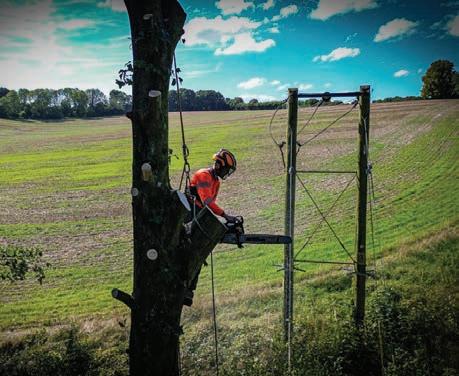
This image shows Nathan felling a damaged Beech tree in Alresford, Hampshire. Thanks to Chris Cave of the media and marketing team.
In each issue of Pro Arb, on our website and the Instagram page, we feature images of the UK’s most talented arborists – why not join them?
HOW TO TAKE PART
You can email a single or number of high-resolution images (over 1MB in size) to: proarbeditor@eljays44.com
TELL US WHO YOU ARE
Let us know your name and business –if you’re a sub-contractor, you can tell us who you were working for.
TELL US WHAT YOU WERE DOING
You can provide us with a few brief details of the job and if you wish, the kit – or if you prefer, let the picture do the talking!
YOU ARE ALL WINNERS
Stihl will choose one photo for the prize, but making the final cut is still a great achievement. Enter as often as you like.
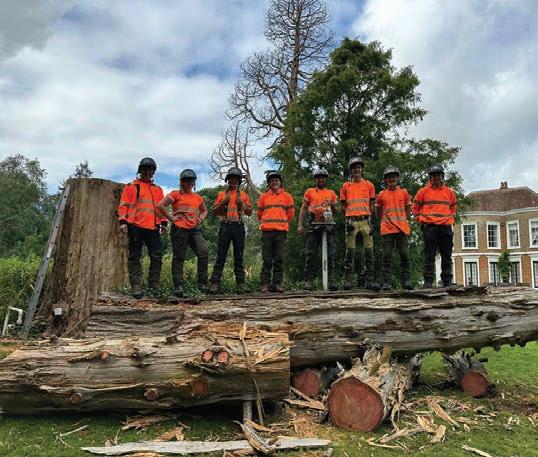
The Tree Doctors team stands proudly beside a successfully felled tree, showcasing their skill and teamwork
IN
A joined-up effort is shown here, with three contractors involved. The photo supplied by Charles Fowler, director of The Tree Feller from Hertfordshire. Charles was contacted by Giles Clarke, of another Hertfordshire firm GPC Tree Surgeons, with a request for a crane to bring a crane down. The Tree Feller has a U400 Unimog with a 26m crane. The climber is Edward Ricardo of Santos Timber. The poplar, needed to be removed as it had fungus at the base. THIS ISSUE'S #ARBINACTION WINNER
HERTFORDSHIRE THE TREE FELLER






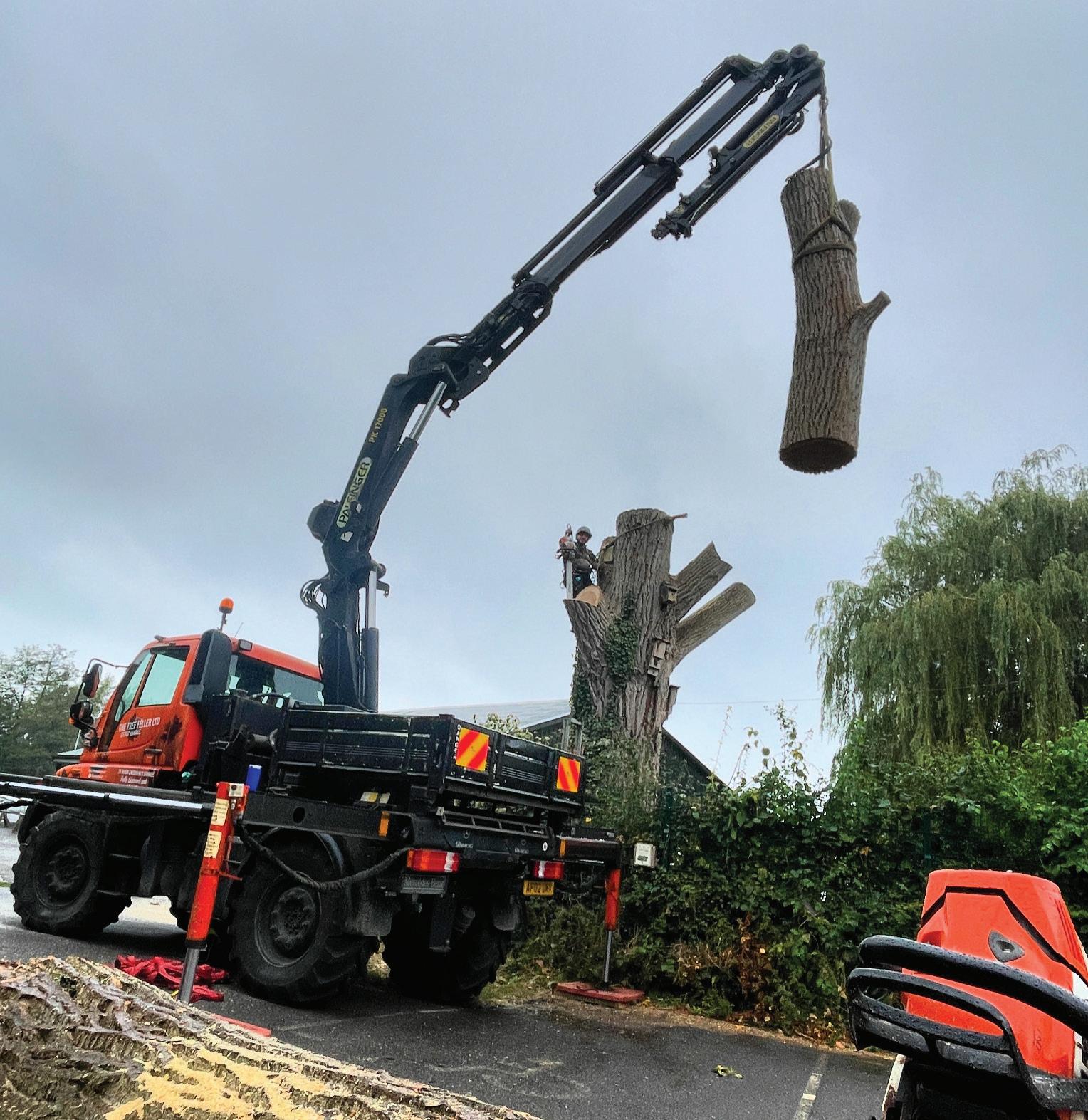




X-FLEX BELT ACCOMPANIED BY X-FLEX WAIST PAD, X-FLEX WEDGE BAG, X-FLEX UNIVERSAL BAG, X-FLEX CHALK HOL DER, X-FLEX TOOL HOLDER, CHALK HOLDER,HAND HOOKAROON AND F ELLING AND CUTTING PLASTIC WEDGE





